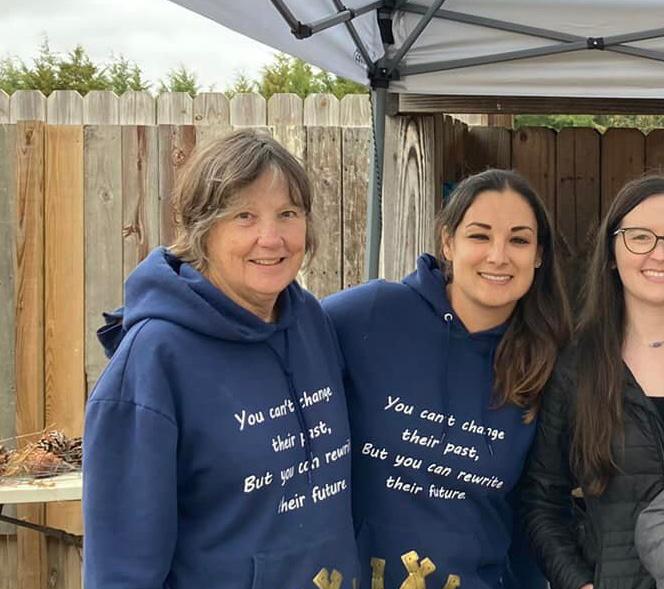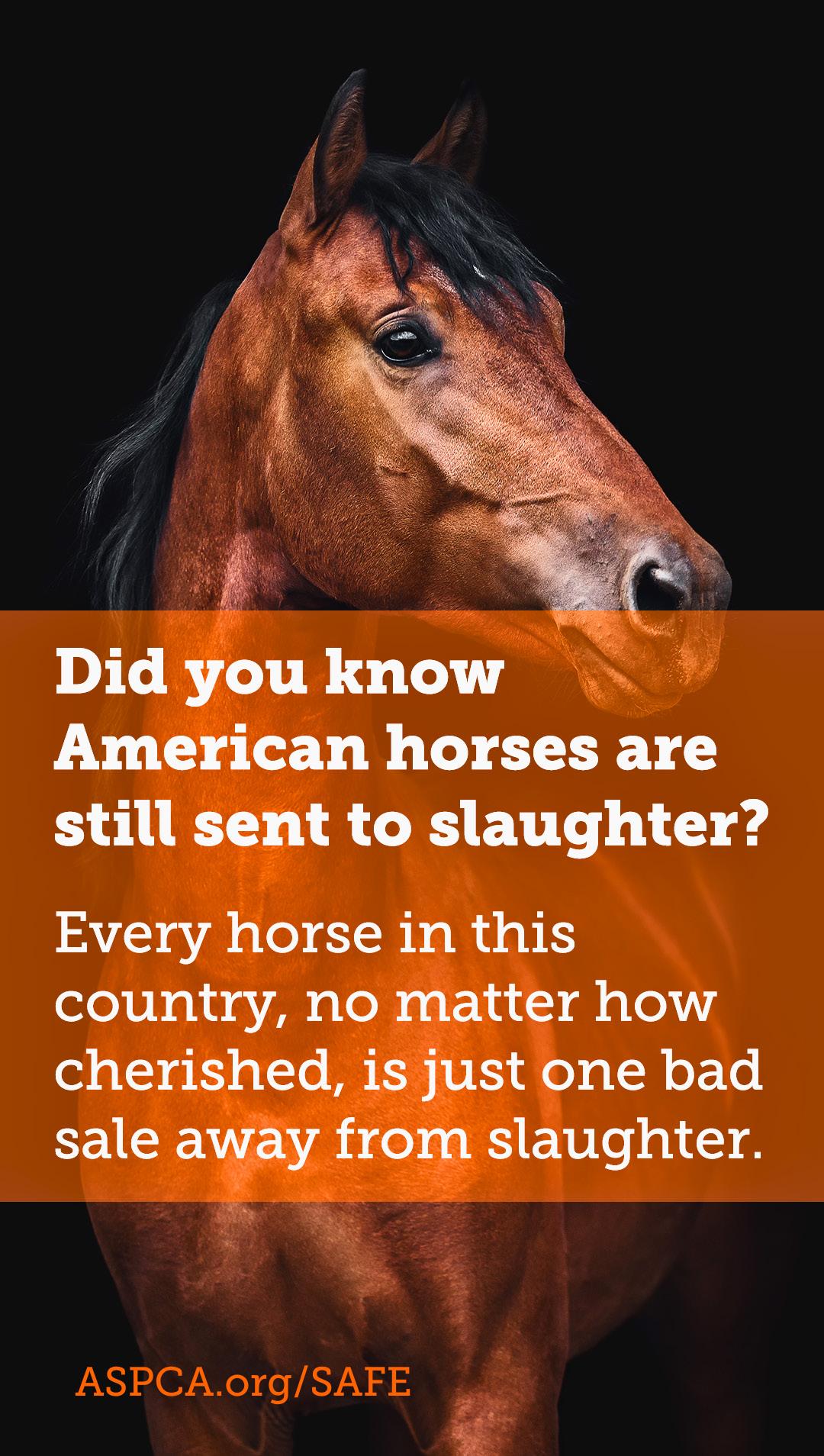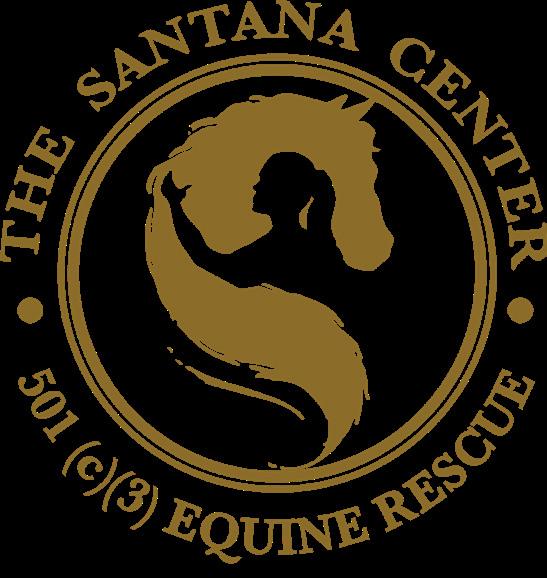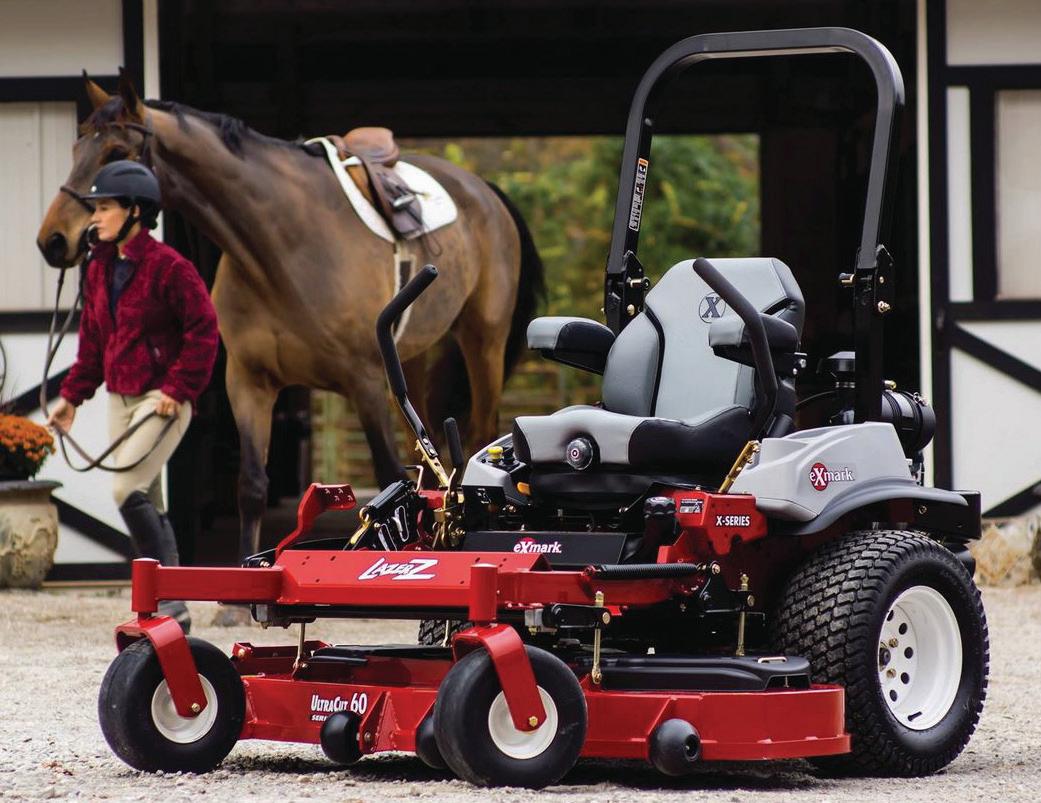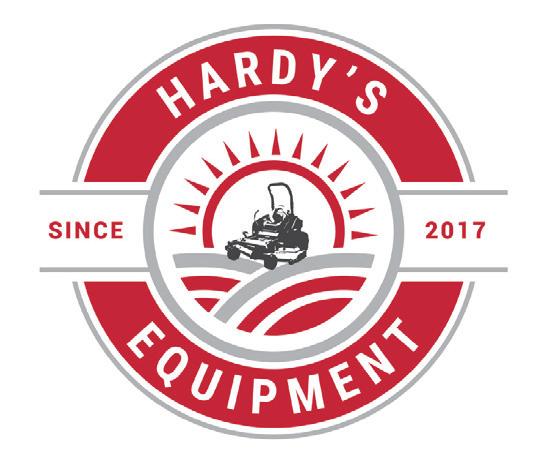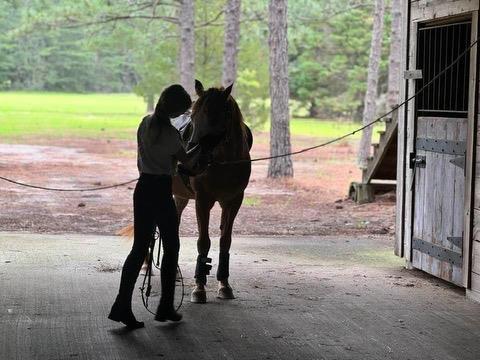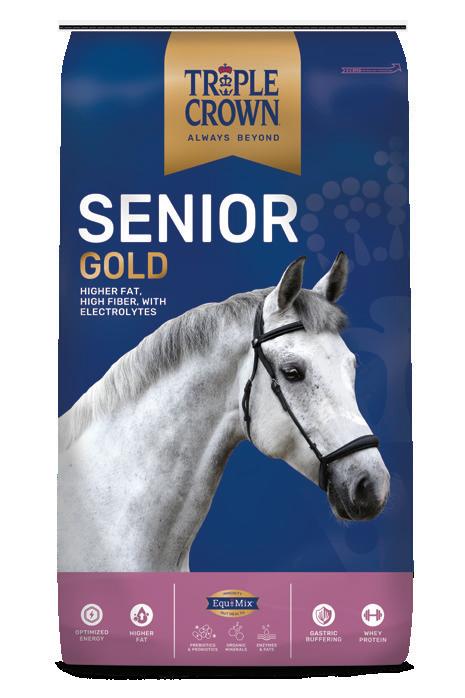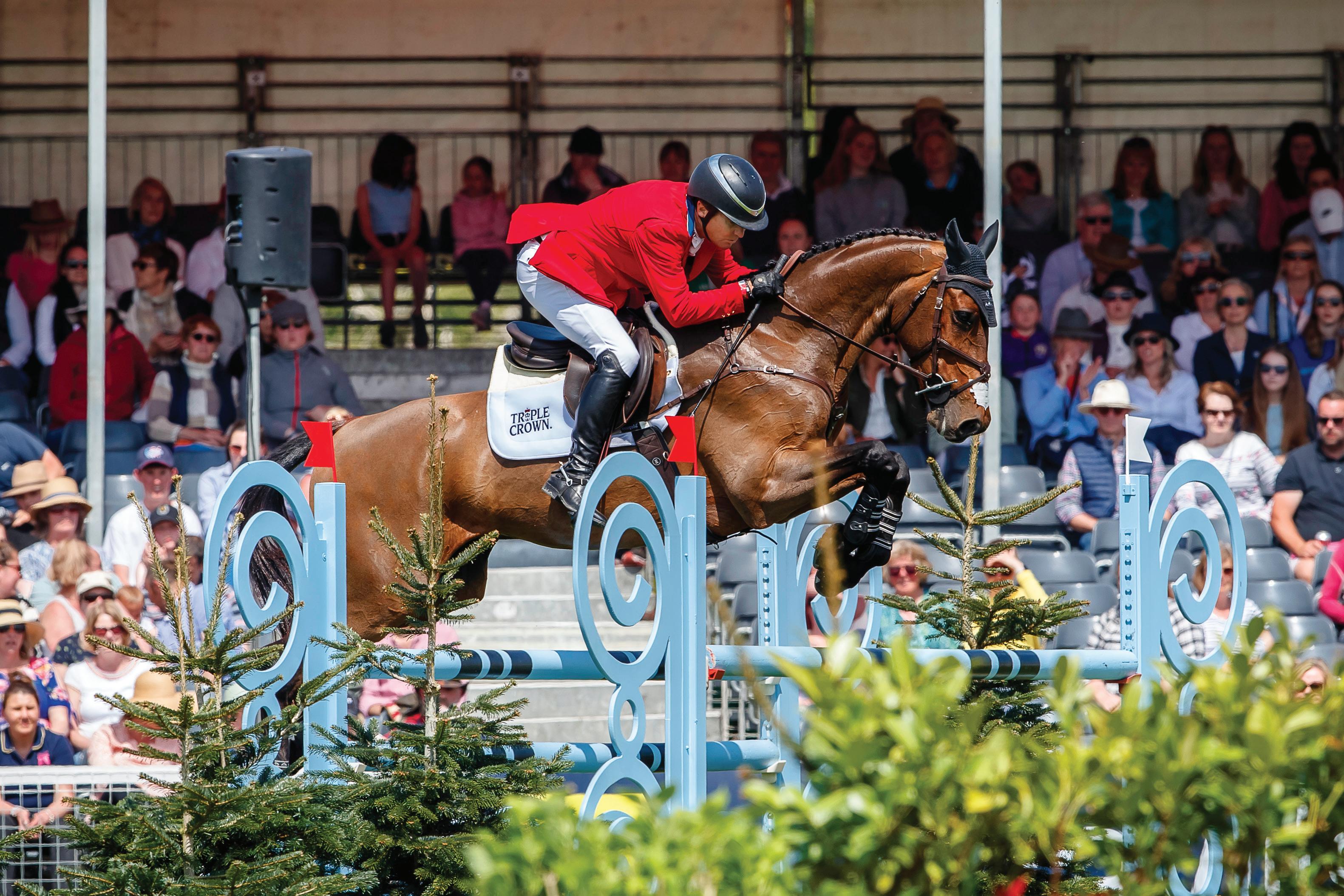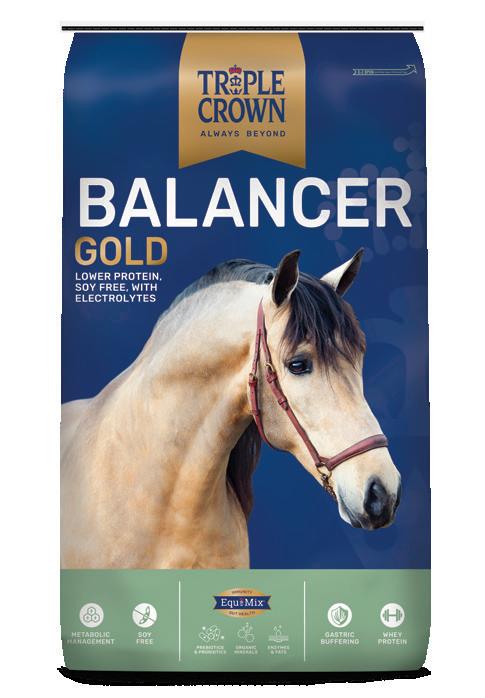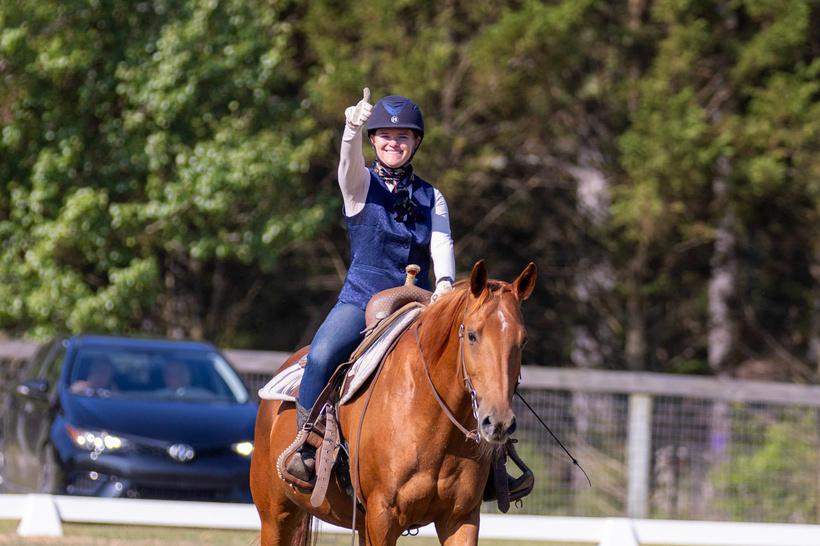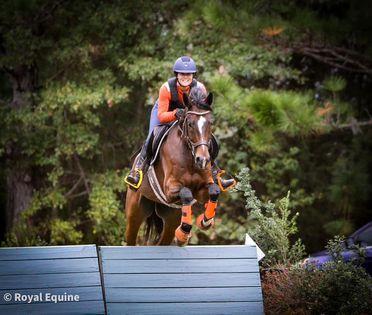
Going the Distance




Going the Distance


I may be greeting you for the first time in digital form, but rest assured, there is the same great content that you've come to expect from Sandhills Equine.
When Hurricane Helene hit Western North Carolina, like everyone, we wanted to find a way to make a difference for those devastated by the storm. We decided to combine our November and December issues into one large, online version so we could donate the proceeds from our advertisers to the recovery efforts. Our wonderful advertisers stepped up in big ways, and we are excited for this issue, not only for the great content, but also the impact it will have on those struggling.
Combining these issues means that we got to really examine some amazingly innovative products available in the equestrian world to feature for the Holiday Shopping Guide. There is truly something for everyone, and you definitely will want to add them to your shopping list - which is easier than ever since each product (and advertiser) is hot linked, so only a click away!
We also meet several people who are involved in the equestrian world in vastly different, but equally important roles, including volunteer extraordinaire, Angelo Lobsinger, and the staff at the Santana Center rescue. And we go on along on the rapid ride with endurance riders, while Daryl Kinney teaches us why it's important to slow things down.
Make sure you follow us on our social media channels and join the email list to stay up to date on all the news, events, and special giveaways available only to our online communities.
I look forward to greeting you again from the print pages soon.
Happy Holidays,
Editor

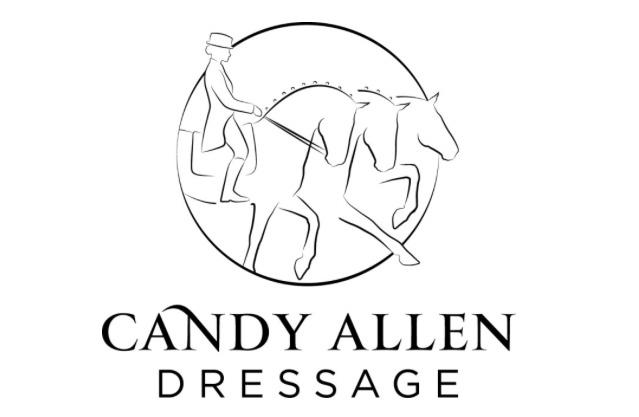
• USDF Gold, Silver, and Bronze medalist.
• USDF Certified Instructor.
• Evented to Advanced level.
• Show jumped up to 1.30m.
Publisher BIC R Media, LLC
Editor:
Cassidy Oeltjen
Layout and Design
Ines Ritter
Contributors
Mary Kate Murphy
Cassidy Oeltjen
Veronica Green-Gott
Lisa Miyamoto
Jason Jackson
Ines Ritter
Pam Jensen
Daryl Kinney
Advertising & Subscriptions info@sandhillseqm.com
General Inquiries info@sandhillseqm.com
Cover Christmas Horses
Annabell Gsödl
Follow us on www.sandhillseqm.com
Sandhills Equine Monthly owned by BIC R Media LLC 360 Fairway Dr Southern Pines, NC 28387
No part of this publication may be reproduced without the expressed written consent of the Publisher
The Sandhills Equine Monthly Magazine and BIC R Media LLC do not neccessassrily endorse the views of their contributors or advertisers.
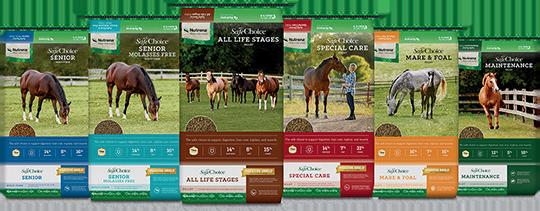

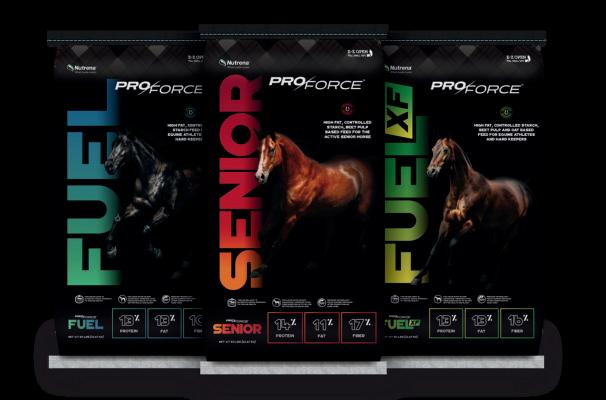
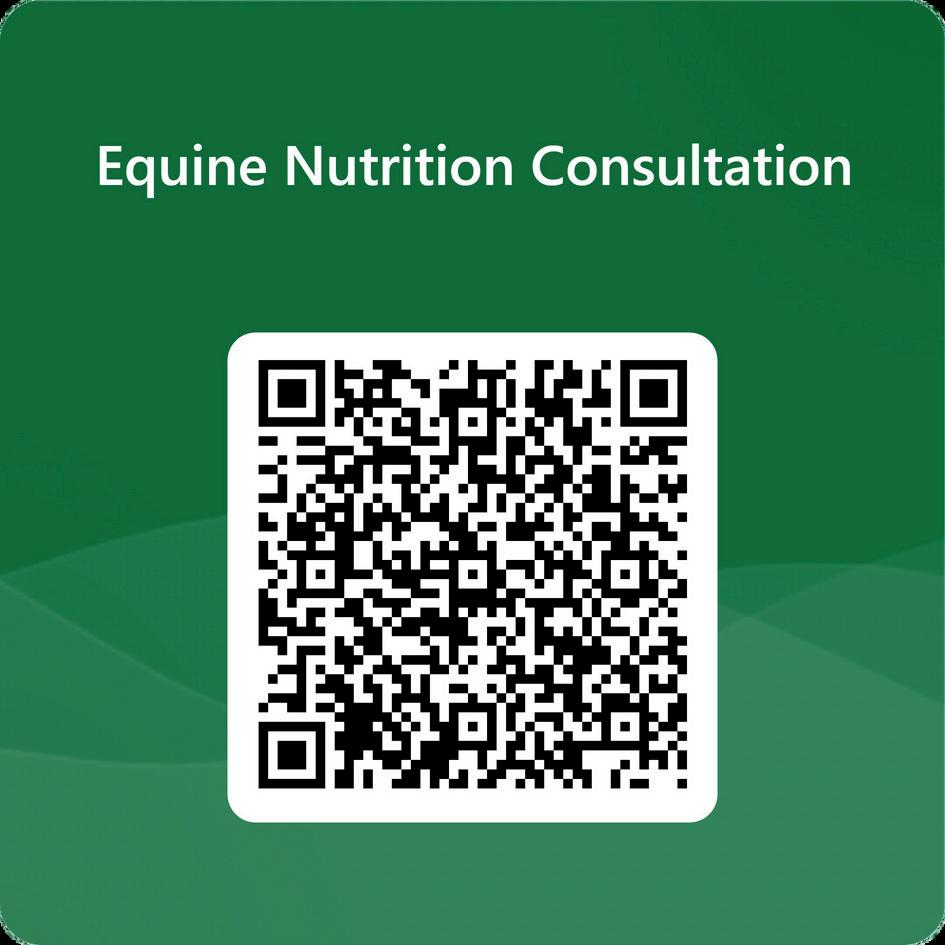

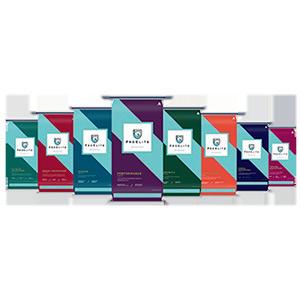


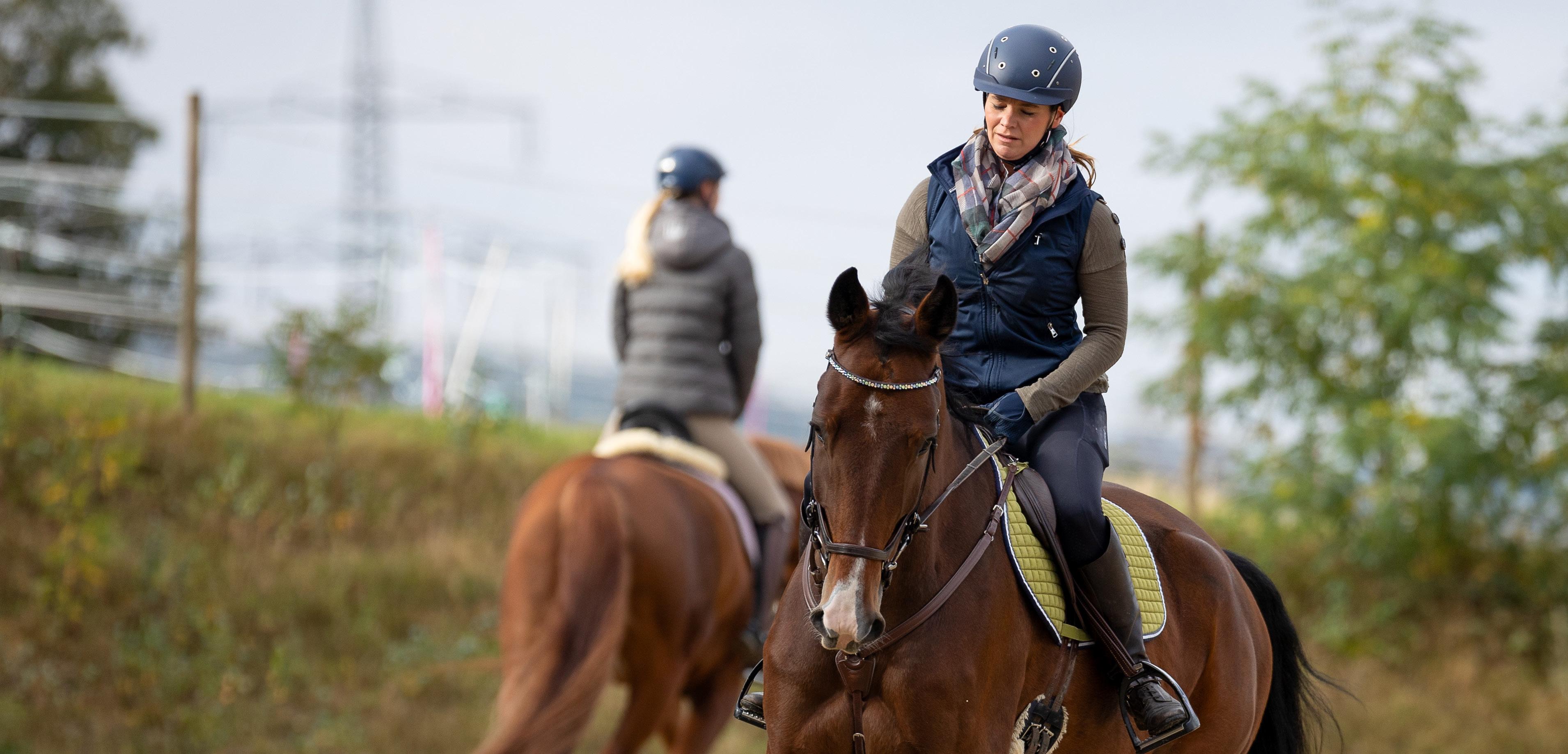
When we think of training horses, so much of what we are asking them to do goes against the very nature of what they are born to do. We want them to carry more weight behind, when they are made to be frontend heavy. We want them to be brave and trust us (a predator), by putting their natural prey instinct aside. And we want them to engage their parasympathetic and sympathetic responses without letting one over power the other.
Nothing exemplifies this more than the process of re-training the off the track Thoroughbred.
So often when you get a thoroughbred off the track, they just want to go around with quick
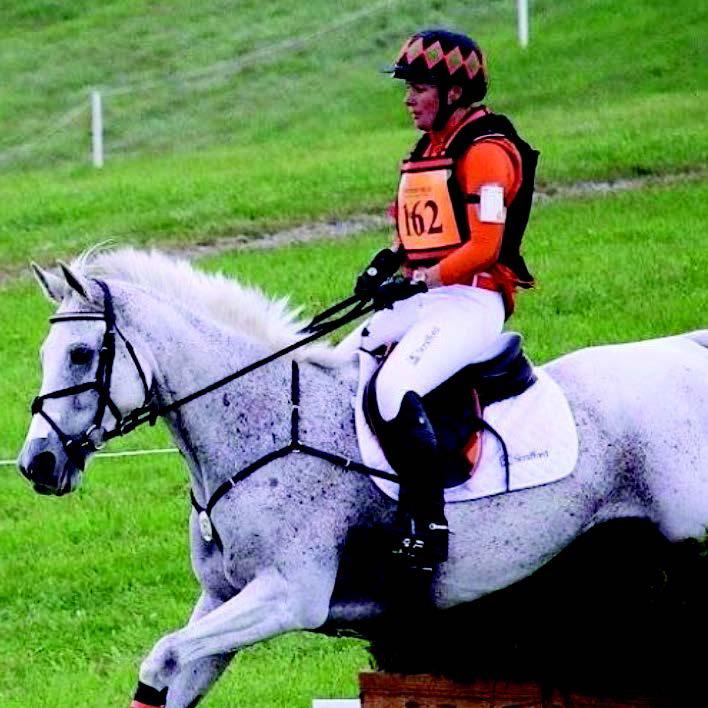
steps and a tense body - up until this point their life has likely just been about galloping. When a racehorse gallops they get very long in their body and then dig in, pulling with their front legs and propelling themselves with their hind legs, which get way out behind them.
When we retrain them, we are often asking them to work their bodies in a very different way, slowing down and being mindful of where they put their legs. We ask them to get lighter off their forehand and not to pull themselves with their front legs, stepping more under with their hind legs and lifting their bodies instead of just propelling themselves forward.
When you are first working with these horses, especially the ones that want to get quick, trying to slow them down and establish a nice even rhythm is often the first goal. Rhythm is the first step on the dressage training scale for a reason, if the horse is constantly going faster then slower then faster again, there is going to be tension in their body.
Once you can establish a nice steady rhythm, then the horse can physically and mentally relax within that rhythm, which gets you to the next step of the training scale - suppleness.
With these thoroughbreds, and really any horse that tends to get tight and wants to go around with
Daryl Kinney is an upper-level event rider operating out of Vass, NC. Daryl spent many years working and training with Denny Emerson at Tamarack Hill Farm. During this time, Daryl competed several of Denny’s horses, bringing them up through the levels. In 2015, Daryl and long-time partner, Union Station, were able to make the move up to Advanced Level.
quick steps, slowing it down is so key to accessing the suppleness in their body and brain. It’s very easy for them to run around on their forehand without actually carrying themselves, but as soon as they begin to sit and lift, it becomes much harder work. You will often find once the horse has slowed down and is actually placing its hind legs and carrying their body, then they almost seem lazy and need more leg on, to maintain the rhythm.
It is important to not just keep pulling on the reins to try and get them to slow down, this often works against us, as the horses will just lean into the contact, get heavier on the forehand and continue going around just as quickly. Making sure you use effective half halts, that are not half halt hold, but half halt soften/ release is so important. This may mean you have to repeat your half
halts to get the horse to slow down but the release gives the horse a chance to react to your half halt and doesn’t give them something to just lean into.
Slowing your own body down and really setting the rhythm with your seat can be very effective as well. This is all why contact doesn’t show up until the third step on the training scale.
Once the horse gets into a nice even rhythm - not so fast that they are running themselves onto their forehand and not so slow that they aren’t pushing/carrying at all - their body relaxes into that rhythm, you start to get the physical and mental suppleness. Next the horse tends to seek the contact, but not in a heavy or leaning way but in a connected, elastic way. The energy the horse is creating and pushing with their hind legs flows through their body up into your
hands, creating that nice feel of contact. If you try to make contact a priority before the horse is ready, then you are more likely to pull the horse onto its forehand and end up making the process take longer.
Some horses catch on very quickly and some will take more time and each ride you will need to work on slowing them down and getting them to push more from behind. Once they start to really understand and you feel like they are pushing up into the contact in a positive way then you will be able to ask for larger strides and more energy.
So often we have to slow things down in order to progress so that we can eventually go faster.
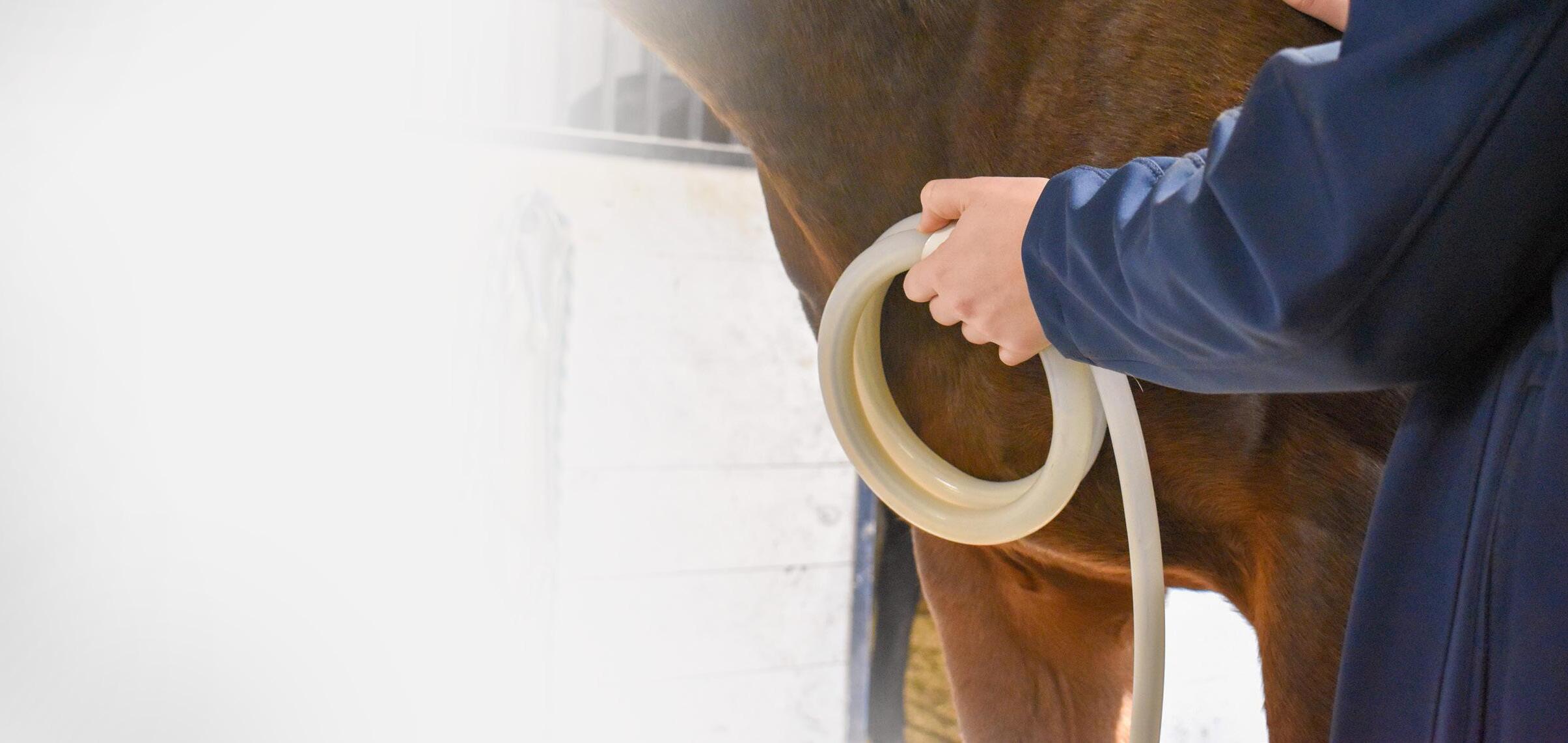
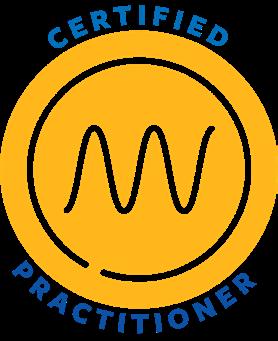



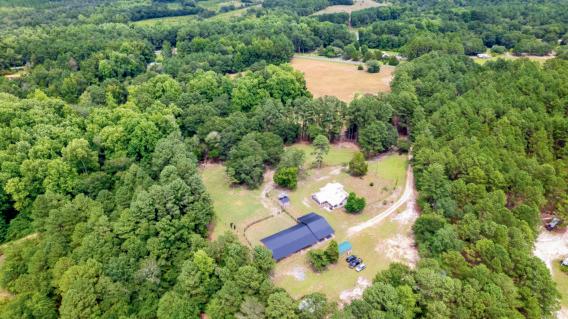
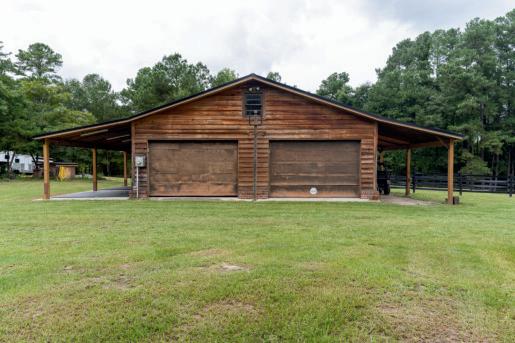
Private, picturesque horse farm on 15+ acres including a well maintained cottage, stunning new barn, lush pastures, pond and open field for riding or carriage driving. There are multiple storage buildings for extra storage needs. This property is located 12 miles from Southern Pines, 5 miles from the Carolina Horse Park, and approximately 28 miles from Fort Liberty. $825,000
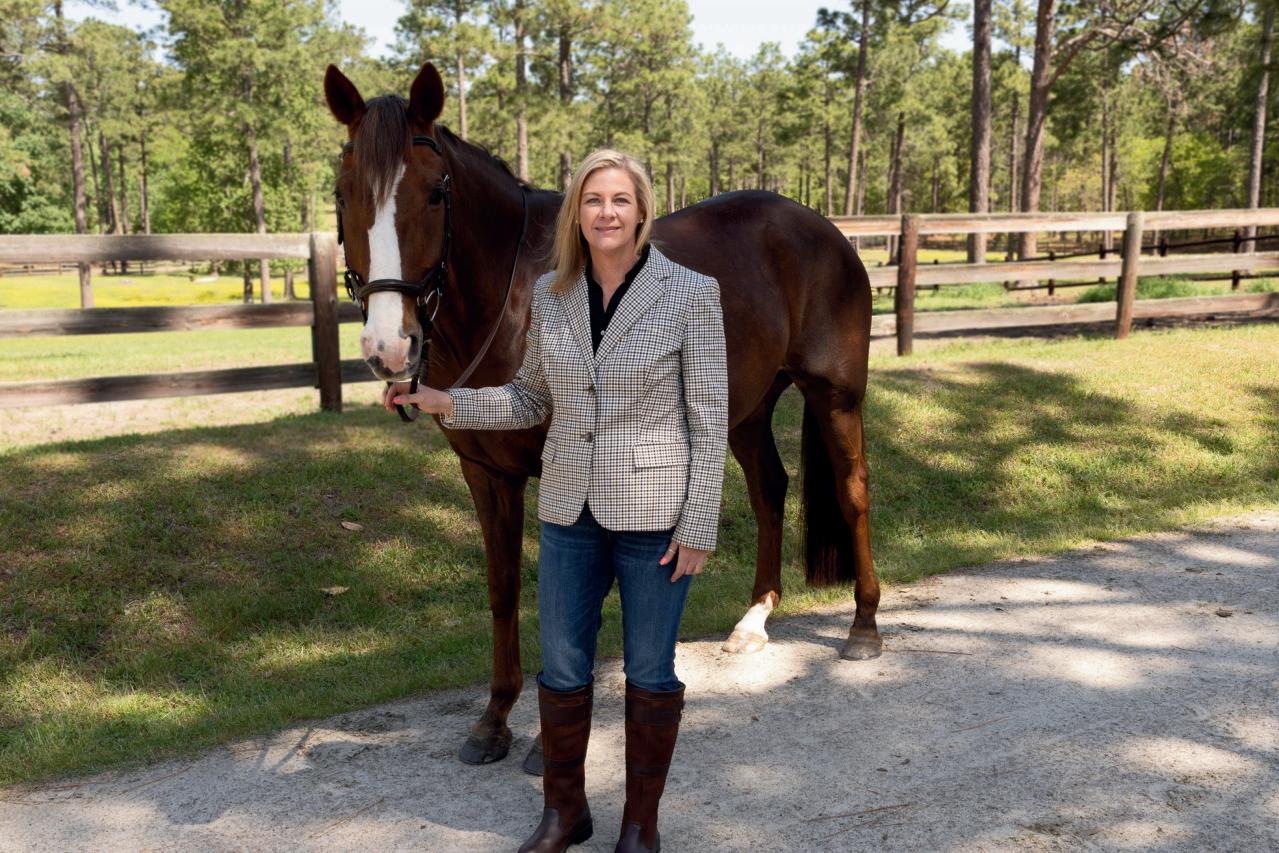
3BR/2BA/ 2,549 sq. ft.

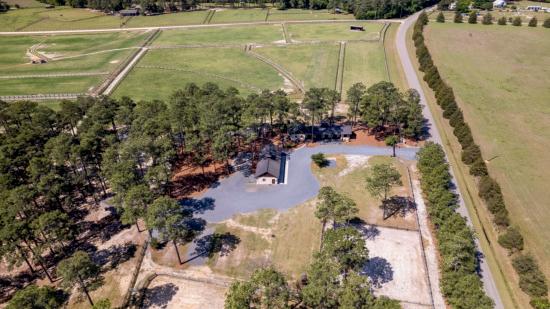
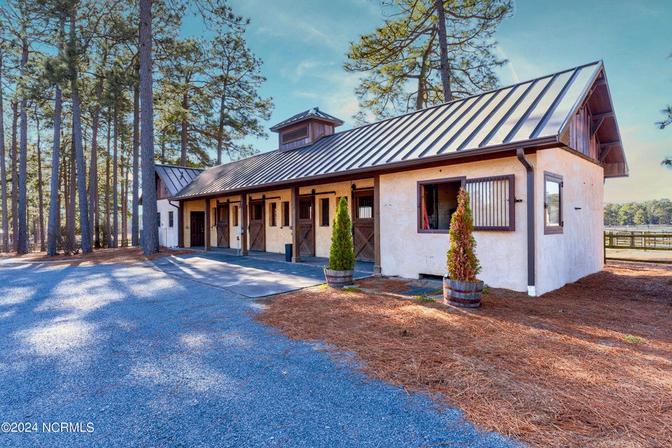
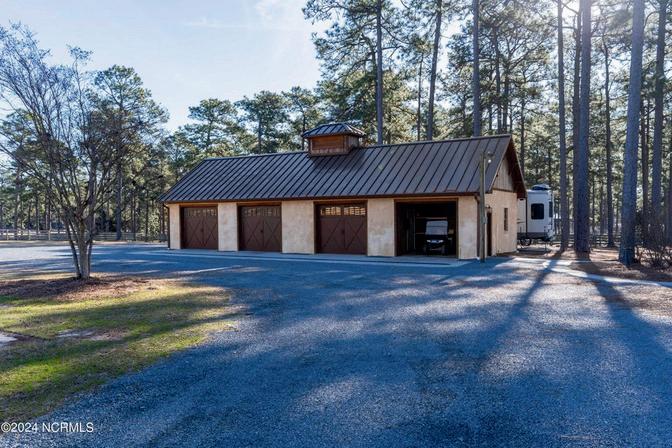
$1,450,000
Unique opportunity in the heart of Horse Country! Privately gated 16 acres complete with fenced paddocks and fields, a 4 stall barn, and a detached 4 car garage with upstairs storage. The shedrow style barn has paddock access from stalls, an interior wash/grooming stall, full bath and 440 sqft lounge with full kitchen, fireplace and enclosed patio.

Get ready to trot into the holiday season with the Sandhills Equine Monthly Gift Guide! We’ve put together an awesome collection of gifts perfect for every equestrian out there. After a ton of searching, we've rounded up only the best of the best—so whether you’re hunting for the ultimate present for a seasoned rider, a special horse or something special for a little horse lover, our guide is packed with fun finds that will make everyone giddy!
You’ll discover many items at your favorite local tack and feed stores, along with some products from beloved local brands. From chic riding outfits to must-have gear and heartwarming accessories, we’ve got everything you need to bring a smile to your favorite equestrian's face. We hope this guide adds a sprinkle of joy to your holiday shopping, helping you find those perfect gifts that celebrate the amazing world of horses during the holiday season. Let the shopping fun begin!
• The Equestrian
• The Horse
• The Junior Rider

• Training & Education
• Home & Lifestyle
• Stocking Stuffers
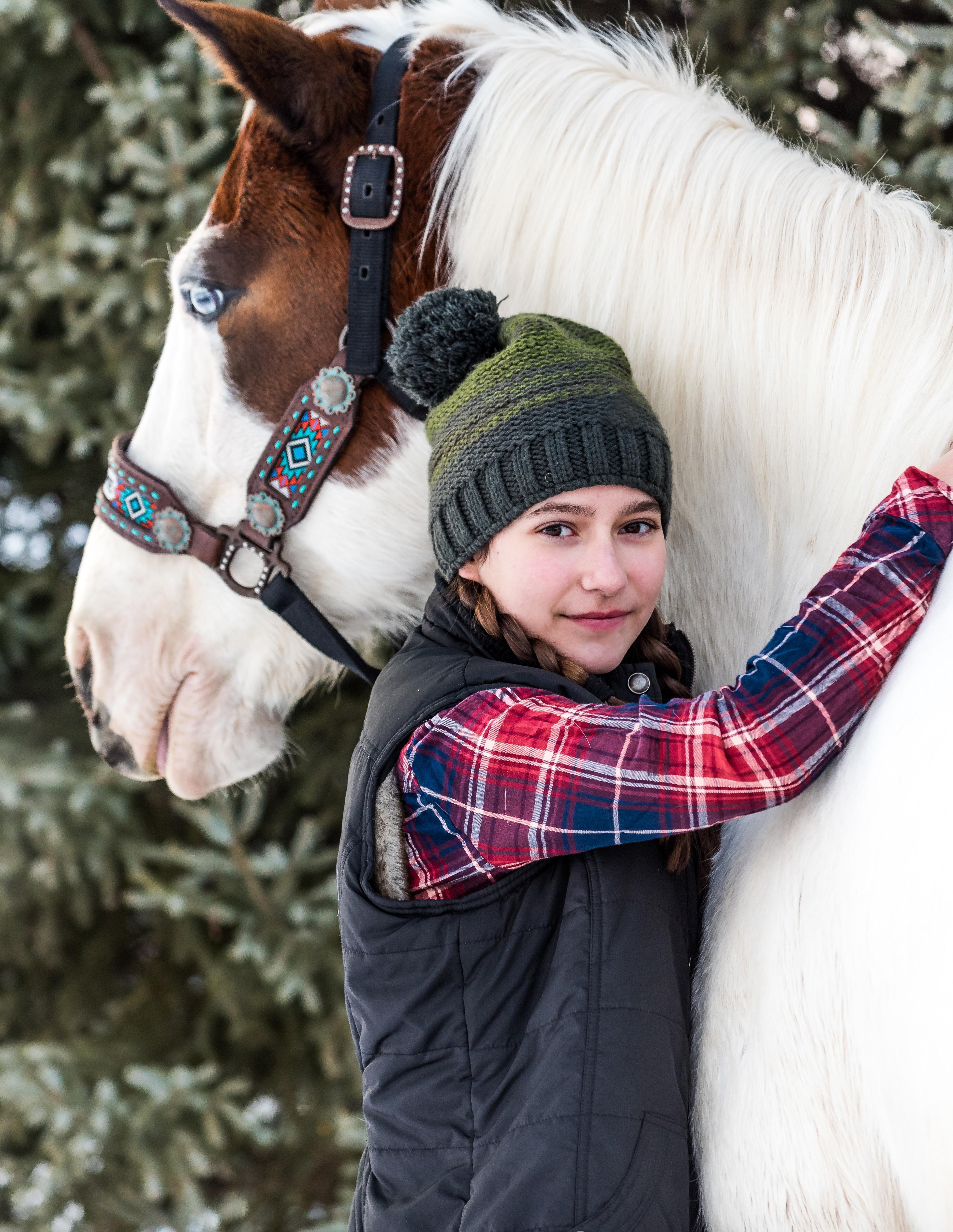

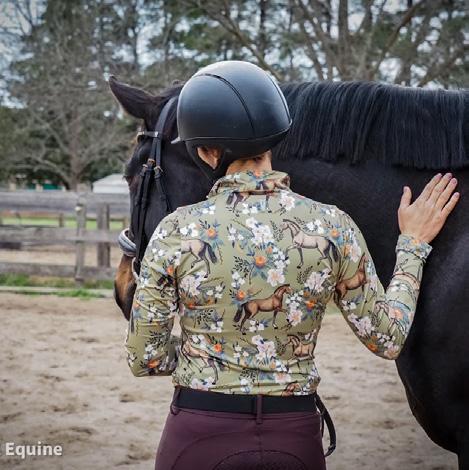
As each shirt bears the name of an influential woman in our lives, Deinhardt Designs honors their unwavering support, dedication, and passion that have guided them forward. These women embody the very essence of the equine spirit – their determination and grace mirror the strength of the designs. With each print, DD pays homage to their unique stories, the way they have elevated their lives, and the echoes of their influence that resonate in every stitch and brushstroke. Buy it at: www.royalequine.com
The first and only equestrian color cosmetics brand on the market. Complete your look with Blue Ribbon Beauty's eyeshadow palettes, available in both western and hunt seat styles. Nail that eye-makeup and clean up nice, in the saddle, or out on the town!
Shop at: www.blueribbonbeauty.com


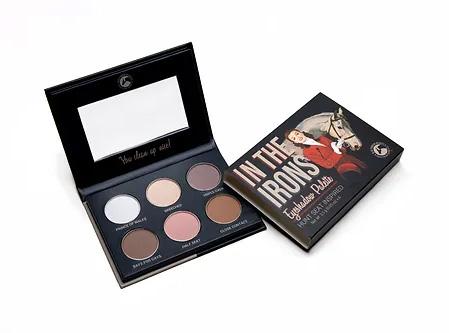
Everyone pads their saddle racks with something. Cushion yours with the easy, elegant Tethershield Panel Guard - so simple and convenient you'll never give another thought to where you place your saddle!
* Cushion each saddle
* Now with NEW Trailer Loops to help keep your saddle secure during transit!
* Easy to wipe clean
* Fit every English saddle
* Fit every style saddle rack
The Kroops "Huston" sunglasses. Channeling the audacious spirit of rodeo champions from Houston, TX, the Houston boasts a confident and bold design. The intricate metalwork, echoing the artistry of classic rodeo belt buckles, complements its square lenses. Designed for everyday wear, this larger frame effortlessly encapsulates the equestrian heritage and contemporary charm.



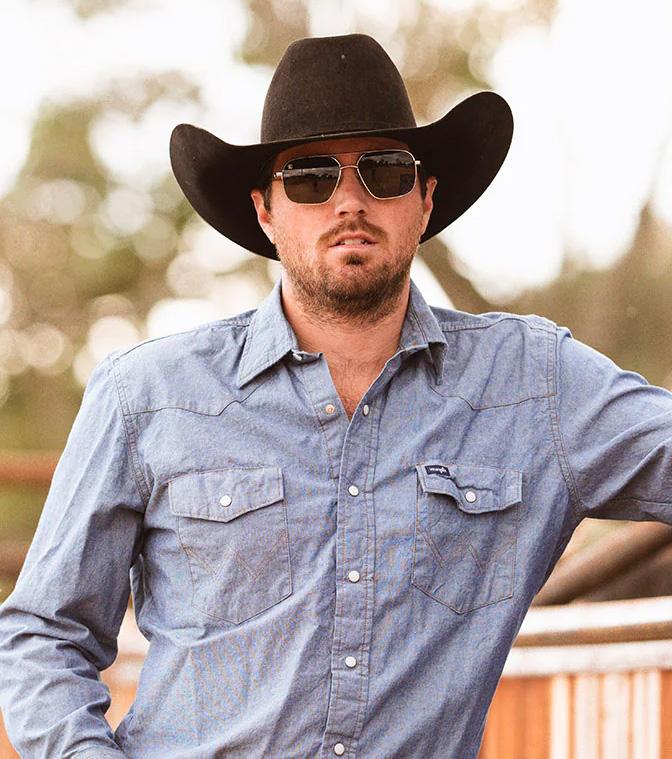
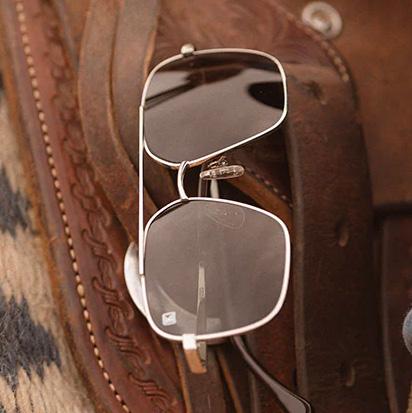
From the Rockies to the Himalayas, the bond between horses and humans has spanned across time and civilizations. In this archaeological journey, William T. Taylor explores how momentous events in the story of humans and horses helped create the world we live in today. Tracing the horse's origins and spread from the western Eurasian steppes to the invention of horsedrawn transportation and the explosive shift to mounted riding, Taylor offers a revolutionary new account of how horses altered the course of human history.
1. Wish lists make life so much easier when shopping for someone! Most stores utilize these. You can add in exactly what you want and share it with anyone who asks.
2. Last minute shopping happens. Let's face it, we are horse people trying to do barn chores in the cold, darkweather and it leaves a lack of motivation for much else. E-gift cards work super well in a pinch! These can be emailed directly to the recipients.

3. If you are shopping local, it doesn't hurt to ask if the person you are gift hunting for has been acustomer. A lot of the small businesses, especially in the Sandhills, know our regular customers well and are always ready to help you pick out something they will love.
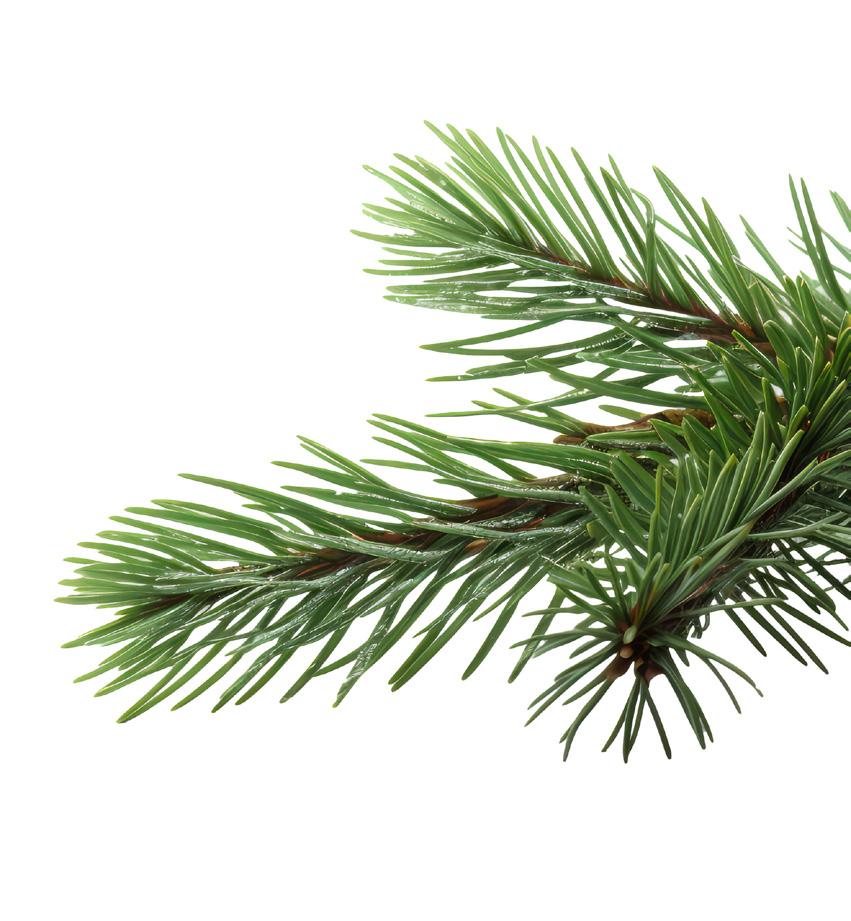

The new Purina® MQ® Equine Microbiome Testing Kit can help you understand your horse’s individual microbiome through next-generation sequencing and bioinformatics. You will receive a personalized nutrition plan tailored to their needs.
The Testing Kit is non-invasive and simple for horse owners to use right in the barn or stable. First register your kit, create your horse’s profile, and then fill out your horse’s health history survey. Second, use the swab to collect a fecal sample (as easy as taking your horse’s temperature) and send in the sample.

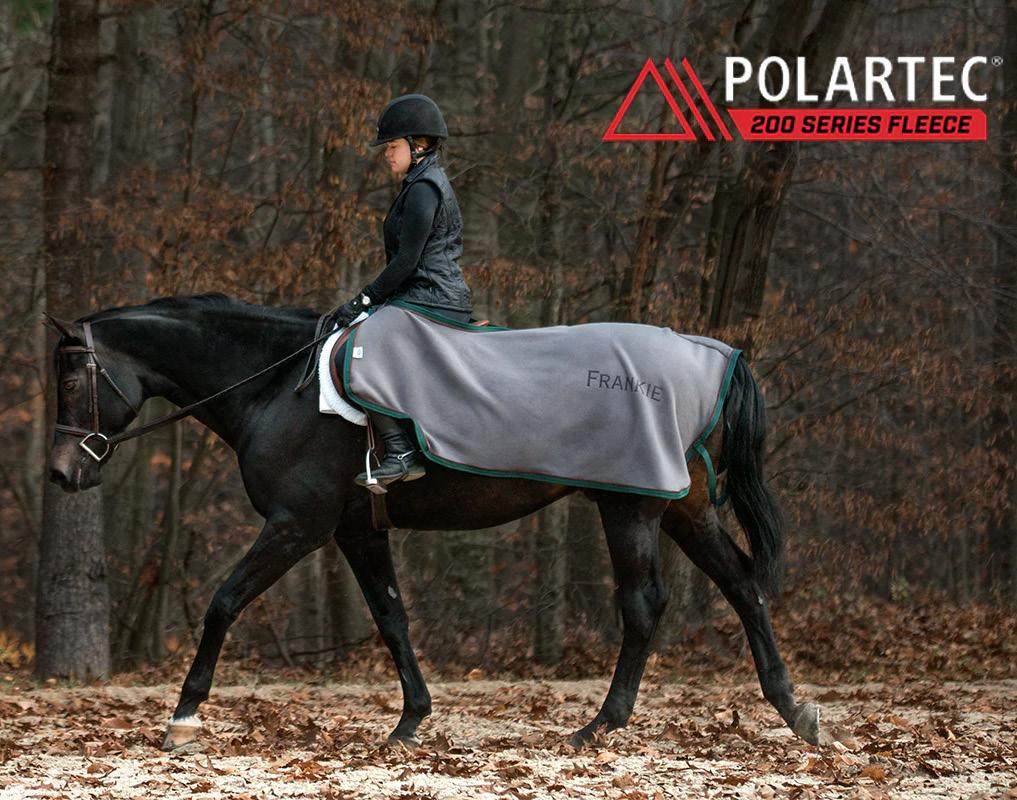
The Polartec® 200 Fleece Riding Blanket by the Saratoga Blanket company, is high quality, durable, and plush to make your winter rides more comfortable! The Riding Blankets are designed to be used under or over the rider's legs, and can easily be maneuvered from the saddle. Classic Polartec 200 fleece guarantees functionalities such as warmth, moisture-wicking, and quick-drying properties. For the best fit, choose the range of your horse's normal blanket size. Add the icing on top with an embroidered name, monogram, or design! Find
No Guilt-Holiday Treats for every horse!
Standlee Premium Western Forage Alfalfa Forage Bites, star anise flavored horse treats are made with premium alfalfa hay, enhanced with star anise flavoring, with no grains or fillers added, making them a treat that both animals and owners will love. Great for horses, cattle, and large livestock and safe for overweight horses and performance horses. Get them at Aberdeen Feed and Supply

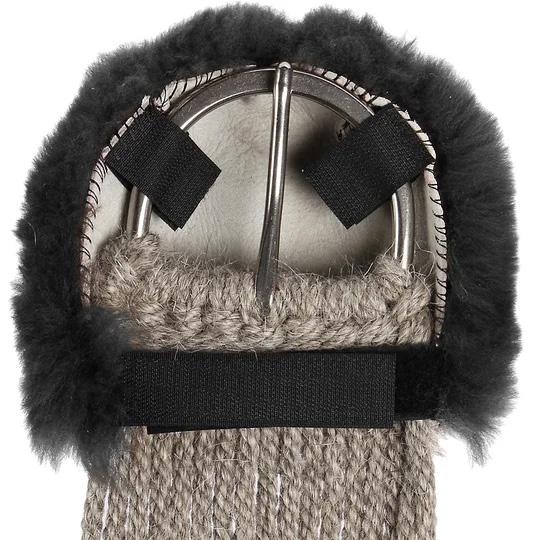

JMS Deluxe Sheepskin Cinch Ring Protectors are the perfect solution to keep your horse happy and comfortable by preventing rubbing, chafing, and galling with dense sheepskin! They secure around your cinch rings with Velcro for a perfect fit.
JMS uses only premium Merino Sheepskin pelts imported from Australia and they are thick, soft, and the most durable available. JMS handtraces and hand cuts their products at their ranch in Southern Arizona.
This handy travel set features individual 1 oz. sizes of all 4 Knotty Horse Apricot Oil & Omega-based formulas of Brightening Shampoo, RECON Leave-In Conditioner, Detangling Treatment and Highlighting Coat Shine.
It's the perfect gift to treat yourself or the equestrian in your life. The signature Apricot scent and visible results will make you a believer! Packaged in an eco-friendly, re-usable black organza drawstring bag. Suitable for sensitive skin types. Paraben-free, Phthalate-free, Vegan and Cruelty-free
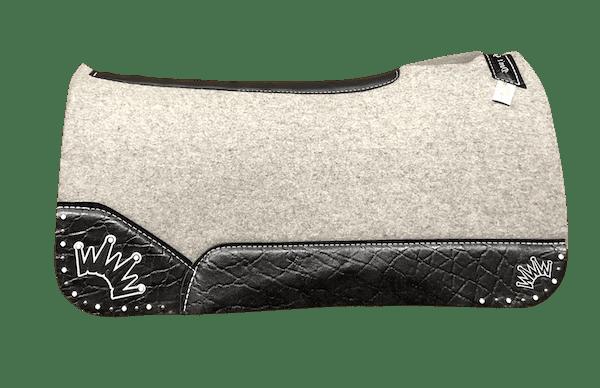


The Kush Collection saddle pad is made from 100% highquality, washed and pressed wool that is 136 ounces per square yard. It is durable and resistant to compression, yet soft and flexible. Properties of this pad allow it to absorb moisture, which aides in removing heat from the horse’s back. This pad is light gray in color, and comes in 3 different thickness options.
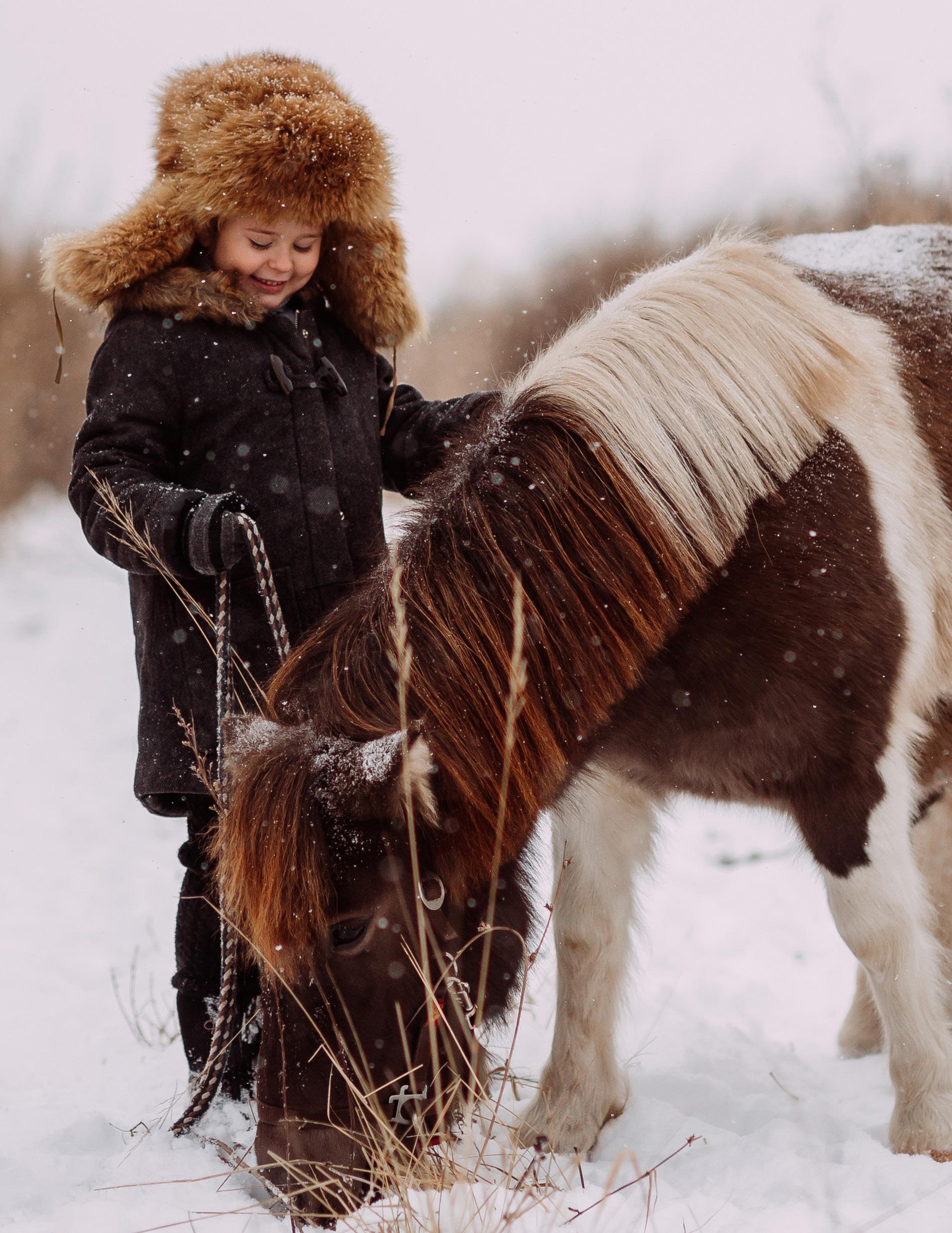

The LeMieux Mini Clara Beanie is an ideal blend of cozy comfort and style for little ones. Crafted with a soft, chunky knit and featuring adorable double pom poms. This beautiful beanie has a faux fur lining keeping your child's head warm while out at the barn. Available in two colors.
Find it at:
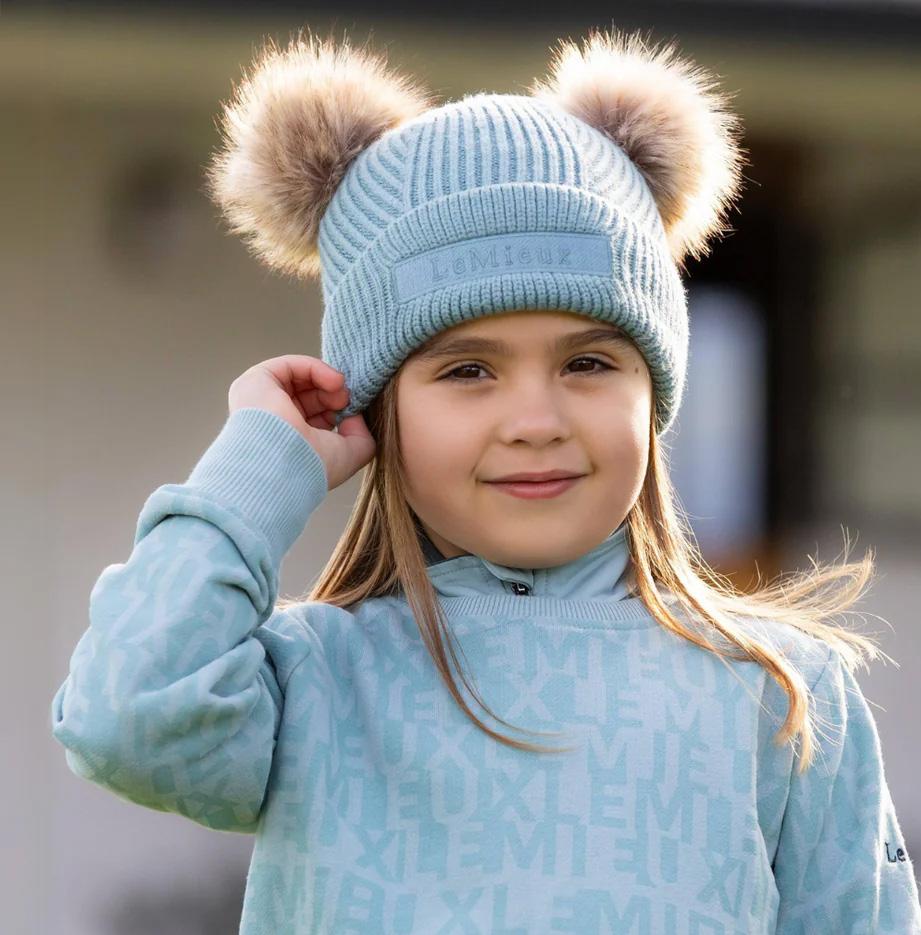
By Amy Novesky
Illustrated by Gael Abary
In lovely, lyrical fashion, If You Want to Ride a Horse introduces young readers to the joys of owning, riding, and caring for horses. It only starts with imagination—from there, the possibilities are endless.

Beginning with a daydream, our young rider goes from dreaming about a horse, choosing the ideal kind of horse, meeting the horse, cleaning the horse, tacking up in preparation to ride, soothing their horse through a hard moment, triumphantly getting on, and finally riding gloriously off down the beach.
Is it the best dream ever or a dream come true? It hardly matters: Gael Abary’s art makes even the most incredible fantasy feel possible, and award-winning author’s Amy Novesky’s unforgettable language is an ode to the power of dreams and self-belief to change any young child’s life.
Find it at the Country Bookstore in Southern Pines or your local Book store.
Belle & Bow Show Bows win in the ring and are a staple of every pony girl’s wardrobe! Often imitated, never surpassed. Proudly designed and manufactured in Massachusetts, USA. Elastic attachment sized for pigtails.
Get them at: Cabin Branch tack store
Southern Pines
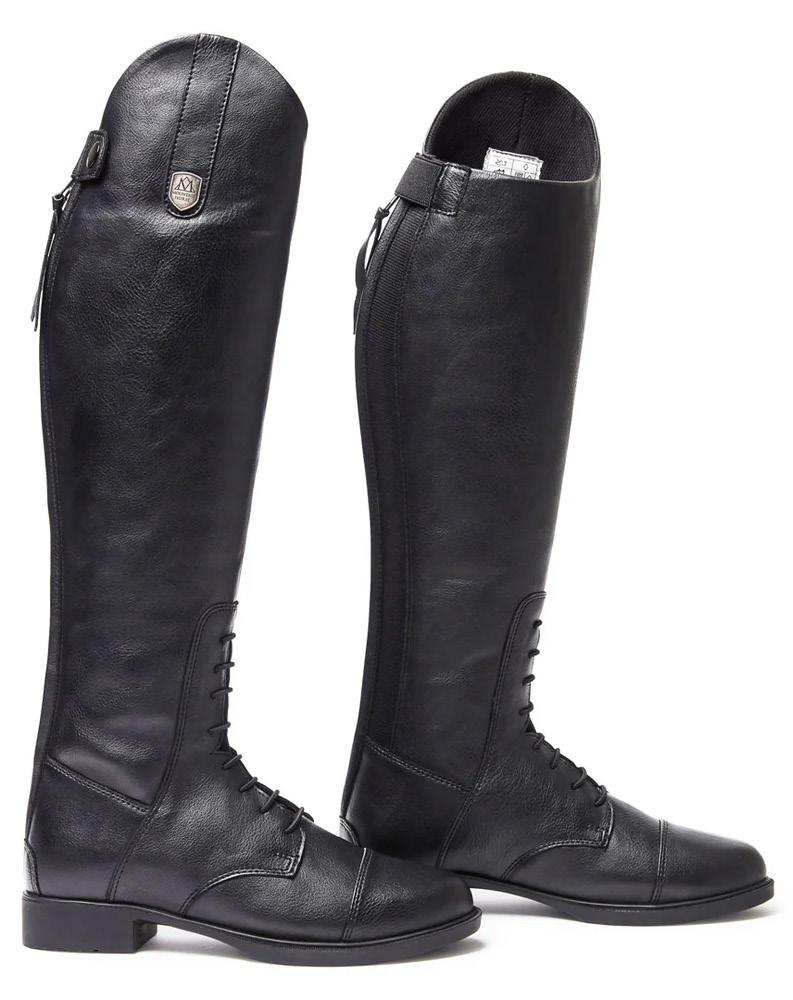
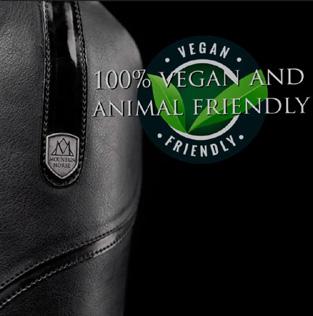


The beautiful and well balanced Venganza Young Field Boots are are suitable for both schooling and showing. These all-around synthetic field boots are constructed with vegan-friendly, breathable material for the ultimate in comfort for young riders.
Perfect for growing riders, The Vengaza Young Field Boots include a removable insole for adding one extra size. These field boots a stylish Spanish top, full length YKK zippers, spur rests and durable rubber soles. The Veganza Field Boots are constructed with a synthetic leather upper and moisturewicking synthetic lining.
Crafty Ponies farrier set comes with all the tools that you need to keep Crafty’s feet neat and trimmed. There is a full set of shoes which simply adhere to Crafty’s feet with the special Velcro type material on the shoes.
The fully illustrated booklet shows children how a real farrier takes off a shoe, prepares the foot, fastens on the shoe and finishes the foot. The tools in the farrier roll include hammer, file, buffer, pincers/nippers, knife. This is a super set to help children to have fun and learn about shoeing!
Available at: www.thetrainersloft.com
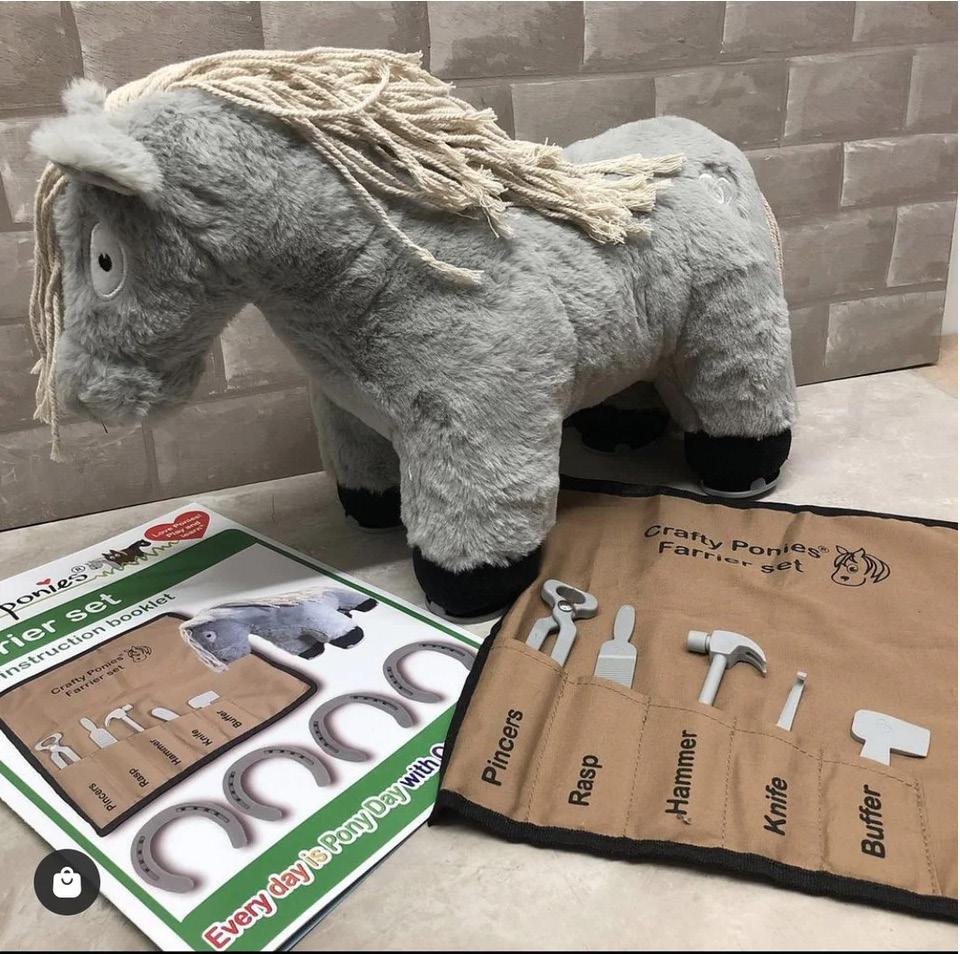


Download Ridely and join a horse training and horse care community with +-20,000 members! With 500+ videos and training programs featuring Olympians like Carl Hester and Henrik von Eckermann, we’ve helped thousands of equestrians like you learn more and improve their horse riding.
• Learn from 65+ World-Class Equestrians
• Record, Journal & Track Your Rides
• Join our Supportive Community
Different subscription plans available at:
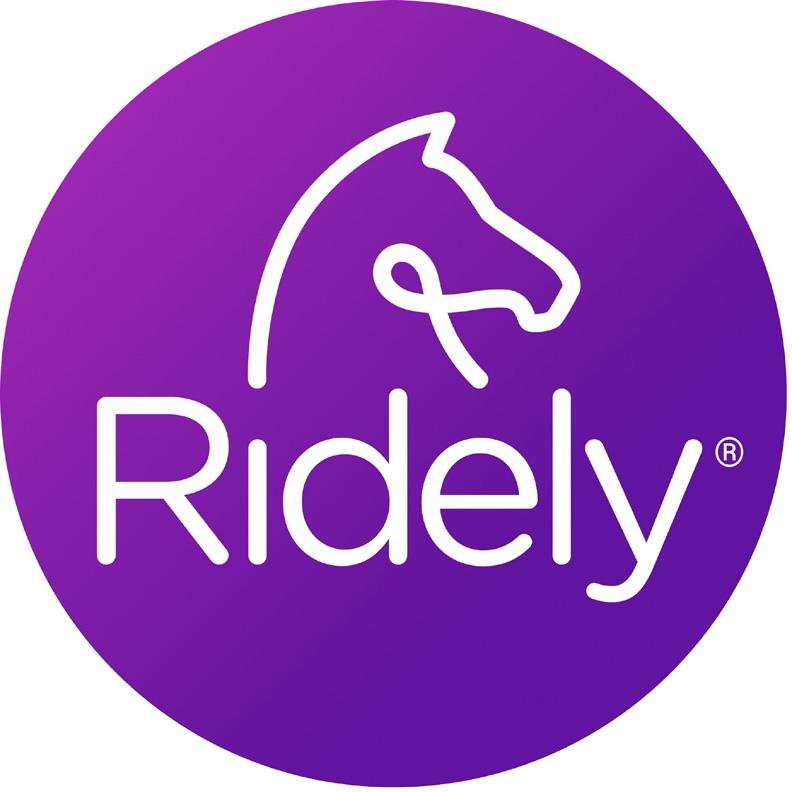
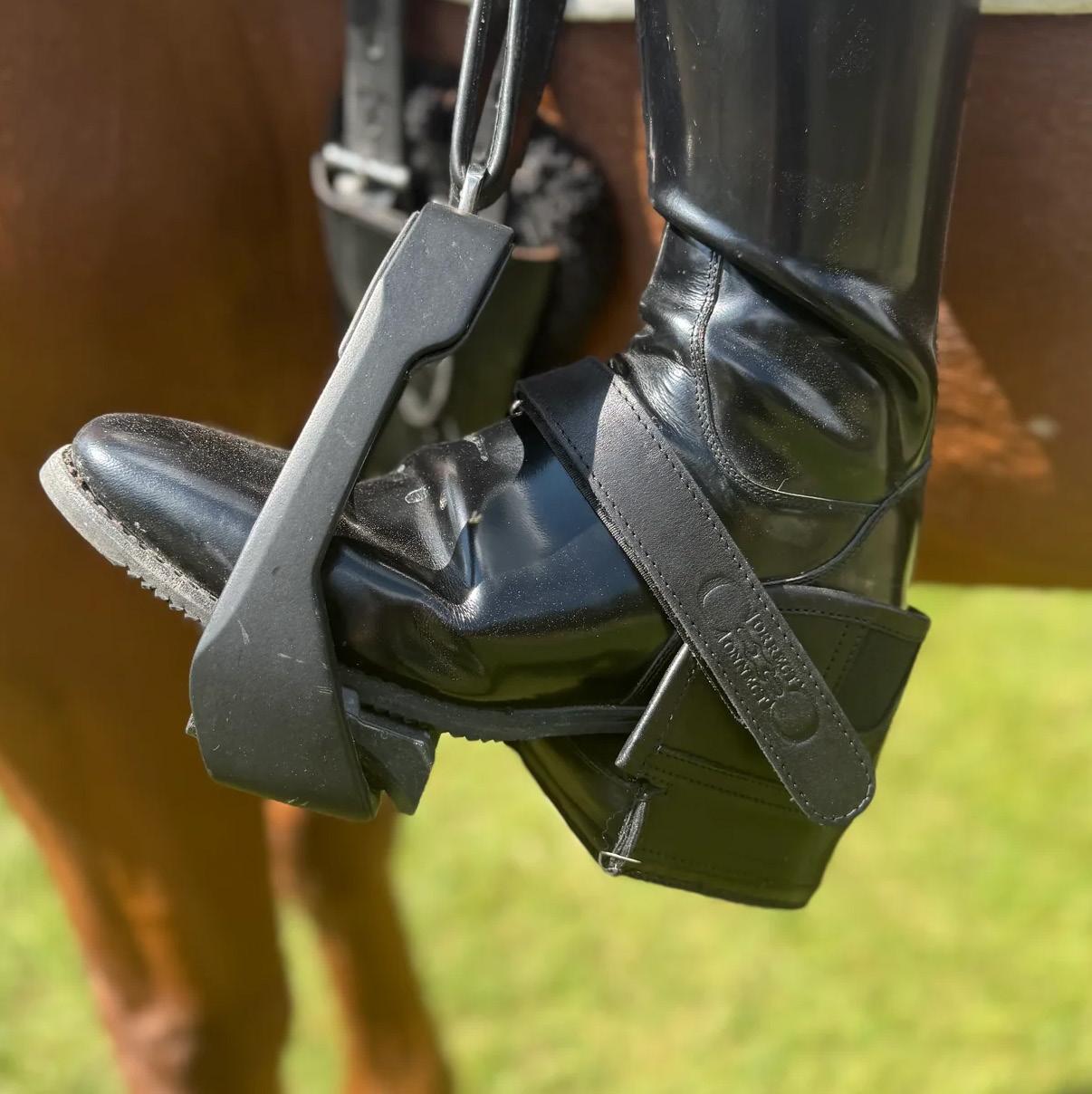
The Equisole EX provides an effective gravitational pull that aids the dressage rider in getting a longer, more relaxed leg and encourages jumping riders to sink their weight into their heels and push their hips back.
The weights allow the rider to create new muscle memory and the feel can be reproduced when they are removed. Extra weight for more advanced riders can be added by using with the original Equisole for a total of just over 5 pounds of gravitational pull.
Purchase here: www.ridecorrectconnect.com
"Finding the right gift for your horsey friend or family member is not always easy because of all the variations of equipment and apparel. Consider a gift card to their favorite equestrian company or make sure you check the exchange policy of the company to make sure it can be exchanged for the right size/color easily.”
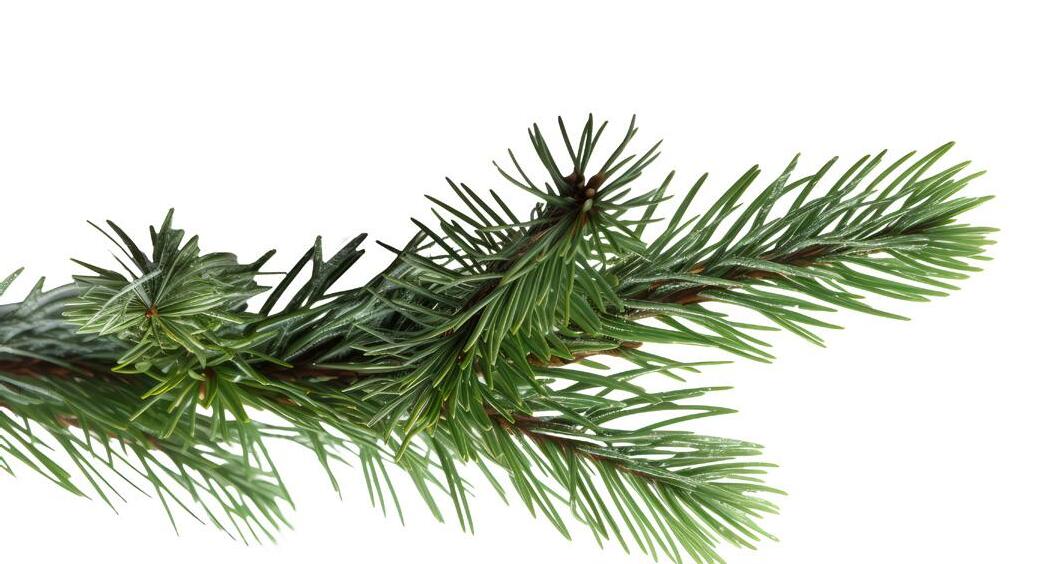

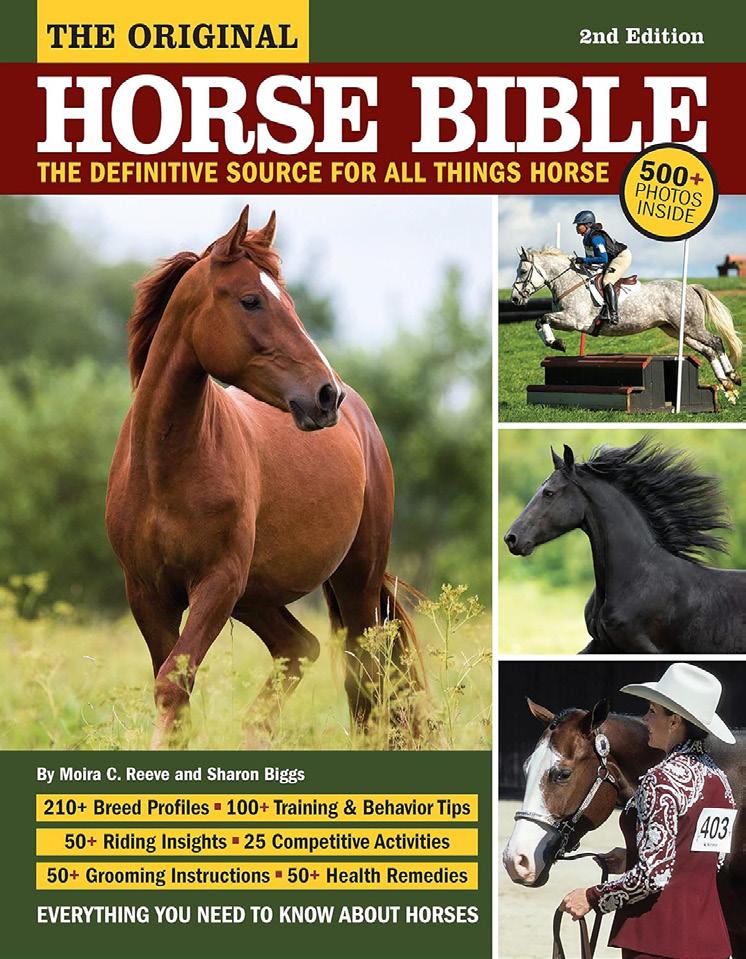
The most comprehensive volume dedicated to horses, Original Horse Bible is a celebration of the relationship between humans and horses, written by two highly regarded horsewomen, the late Moira C. Allen and Sharon Biggs.
This book belongs on the shelf of anyone interested in horse-keeping or who admires these magnificent creatures! This edition includes sections on advances in imaging technology and medications and updated information on saddles, bits, poisonous plants, deworming practices, and natural horsemanship.
The horse Education Company, creater of the Hybrid halter ioffers a limited edition Lungeing kit including Everything you need to start lungeing or groundwork with your horse. The items are handcrafted and beautifully boxed.
The set includes :
• A black leather Classic Hybrid Halter
• Our lunge length (14') Working Rope with snap in black
• A telescoping lunge whip
• A digital guide to make lungeing stress free.
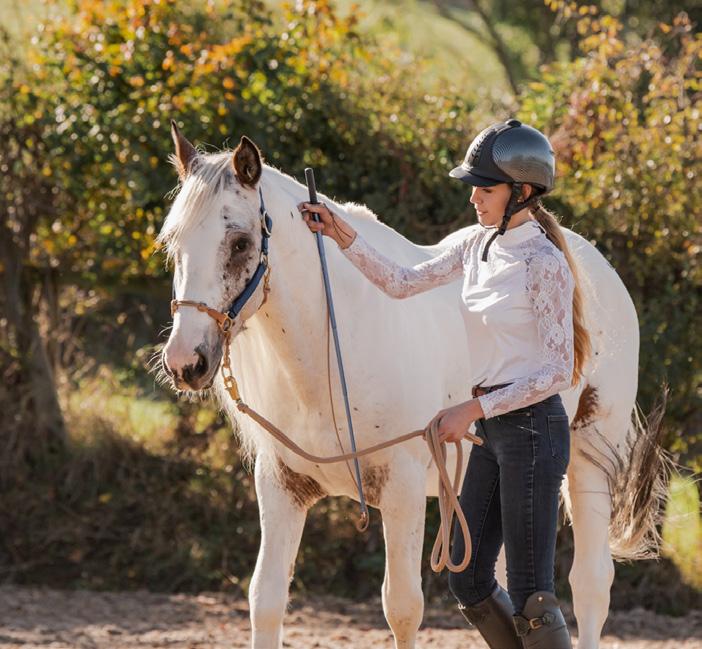
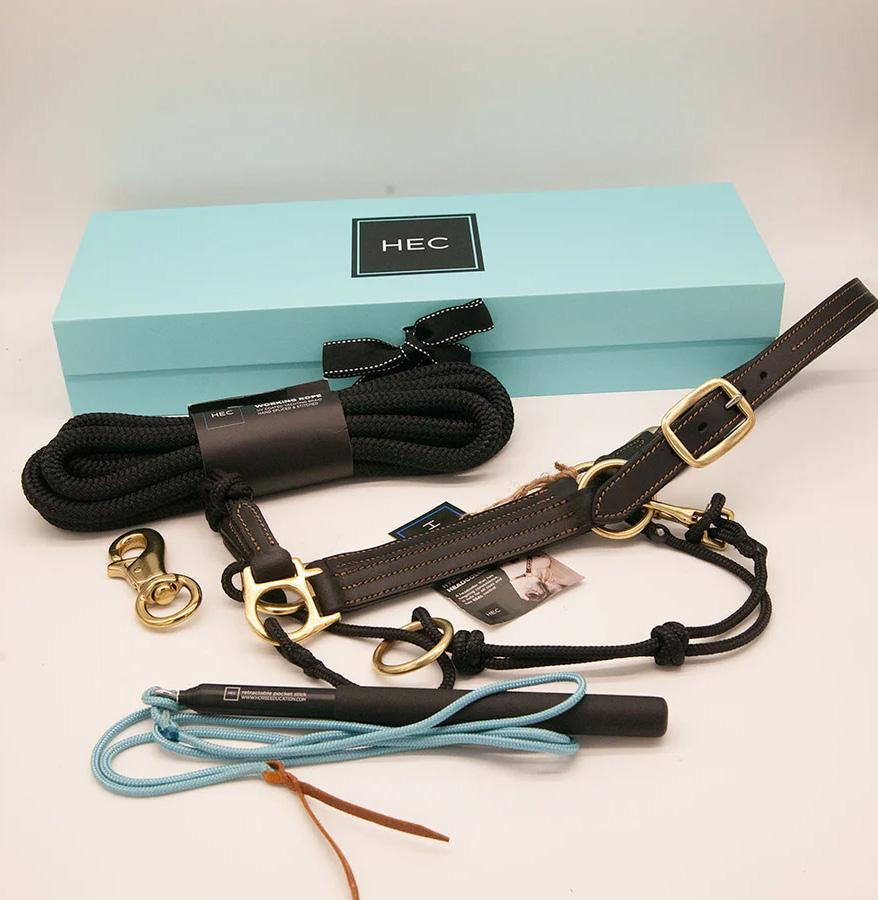

If you haven’t stepped into a tack room of a stable, you are missing out on a wonderful scent experience. Leather, musk, and, okay, dirt, combine to give the room a one-of-a-kind smell. Available in a variety of Equestrian themed scents.
11 oz. reusable glass container, cotton wicking with 40-45 hour burn time.
8 oz. matte black tin, cotton wicking with 32 hour burn time. Purchase them here: www.kygreen.com


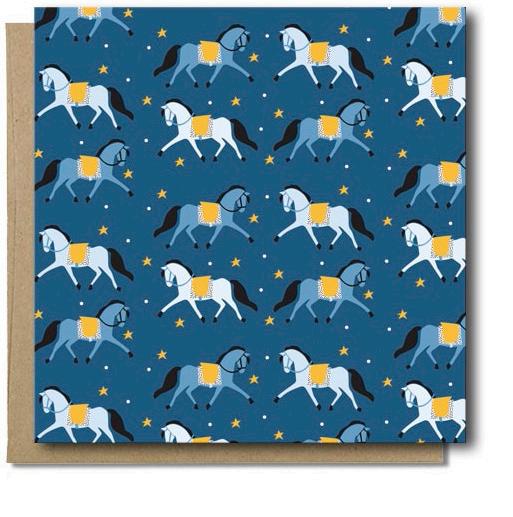
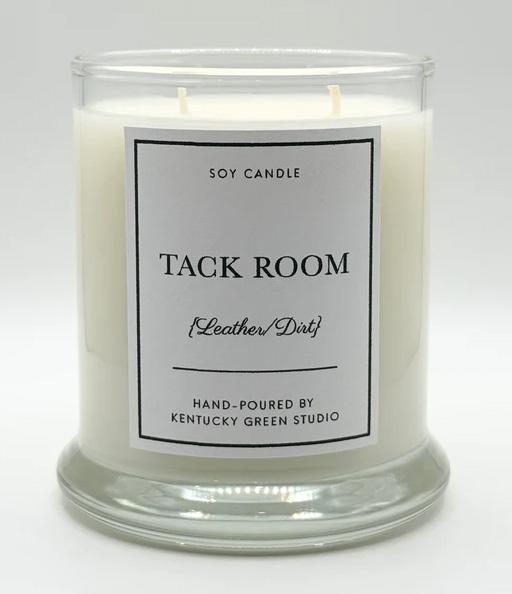
Mare Modern Goods is a destination for modern equestrian design and gifts for horse lovers.The products feature original artwork and patterns with bold, bright colors and are inspired by horses and riders in the equestrian community. Find them here: www.maregoods.com
Add the snowy magic of the Breyer 2024 Holiday Horse to your Christmas tree in miniature! Housed in a silver-toned stirrup, a finely-detailed miniature of Après Ski strides through the glittering snow. A pinecone dangles from the top of the stirrup and the ornament hangs from a red, satin-like ribbon.
Pair this with the Après Ski Holiday Horse for the perfect present or hostess gift!
M and M tack shop in Raleigh or www.mmtackshop.com
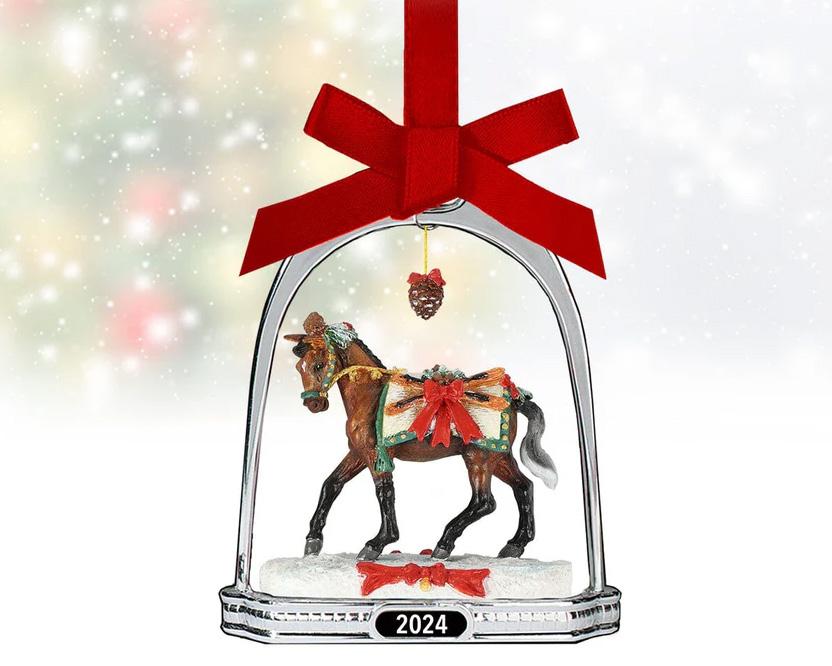
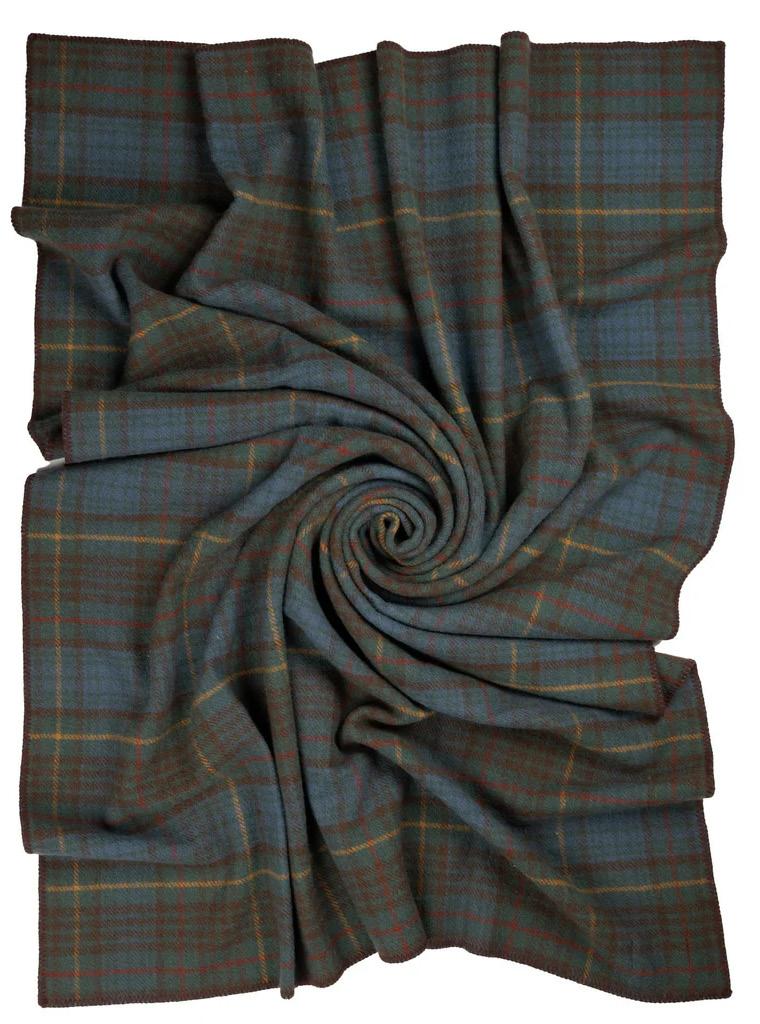
The Prince of Scots highland tweeds "Big Throw" is an extralarge, warm and inviting throw blanket with blanket hemstitch offering comfort and warmth.
Made of sustainable 100% pure new wool, the big throw measures is perfect to snuggle up for romance or read your favorite novel. Imported from England.
• Extra-large throw measures 59 inches x 80 inches
• Woven in the british isles with centuries old skill work and design. Imported from England.
• Pure new wool is heavy, durable, coarse with a rustic feel.
• Perfect throw to add color to any room. Indoor or outdoor use. Snuggle up with a good book or cozy up around the campfire.
• Heirloom quality a premium product destined to become a family heirloom and your favorite blanket.
• Prince of Scots is the authority on authentic tartan & british style.
"This holiday season, remember that shopping for your horse is more than just checking off a list—it’s about finding just the right product, (in just the right time amount of time.) Don’t be afraid to ask for advise! Enter a local store and the items there are likely all handpicked by people who know and live the equine lifestyle. People made up of your neighbors, passionate about sourcing the best items to meet your horse's needs. From treats, to clothes, to hay and feed, and even fashion - asking for personalized recommendations not only ensures you get exactly what works for your horse, but also supports local expertise and care. Let others take a small load off of you this year and help find the perfect gift for your equine partner. Bonus - you support your community at the same time!"
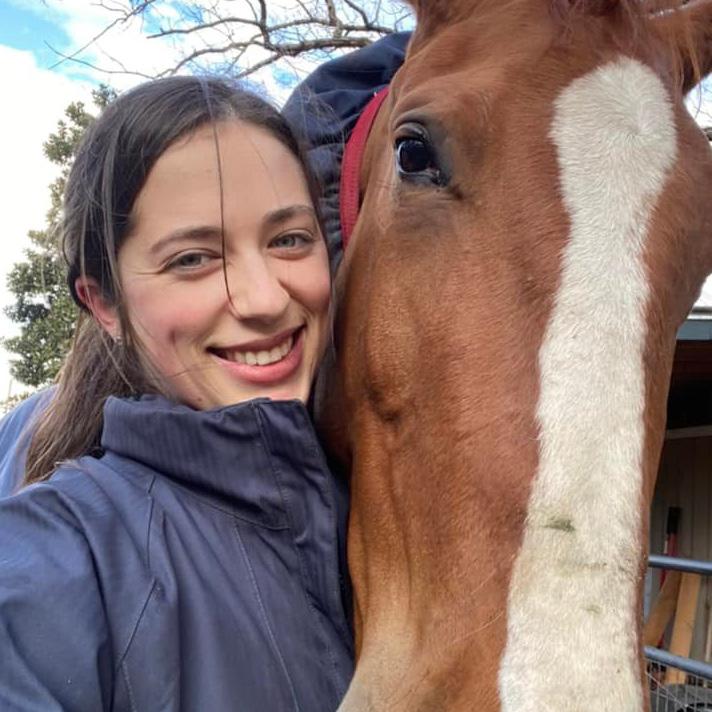
- Kaily Silvis, Moore Equine Feed and Pet Supply


for
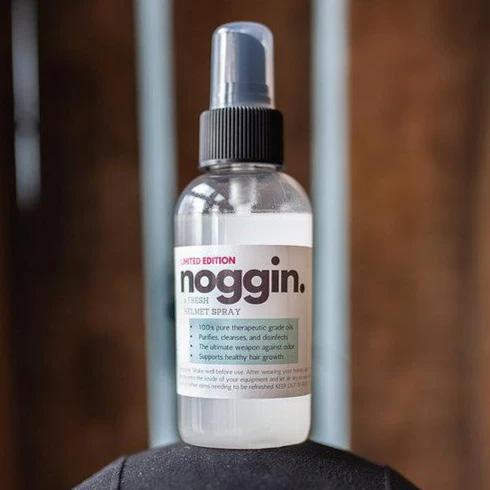
This Fresh Helmet Spray is the ultimate weapon against odor. It purifies, cleanses and disinfects naturally. We promise you'll love the smell of our spray and will marvel at how it neutralizes odor on contact.
So, freshen up your helmet, boots, gloves, shoes, fabrics, blankets, vehicle interiors, and more. The, all-natural, non-toxic ingredient formula that will combat odors and bacteria. An added bonus is that the product supports healthy hair growth due to the Cedarwood essential oil in in its formula.
Available at: Cabin Branch tack store, Southern Pines
Made by hand in small batches, it is nothing but the best: Clean, Soften, Preserve Leather - One Jar Does it All. Removes Scuffs Genuine Carnauba Wax buffs easily to a shine. Easy To Use and Economical. Will not change color or shade of leather. Best on Finished Leathers, Exotic Leathers, Any Colors 100%. A must have in any tackroom.
Net Weight: 4 ounces
order it here: www.blackrock-leather.com

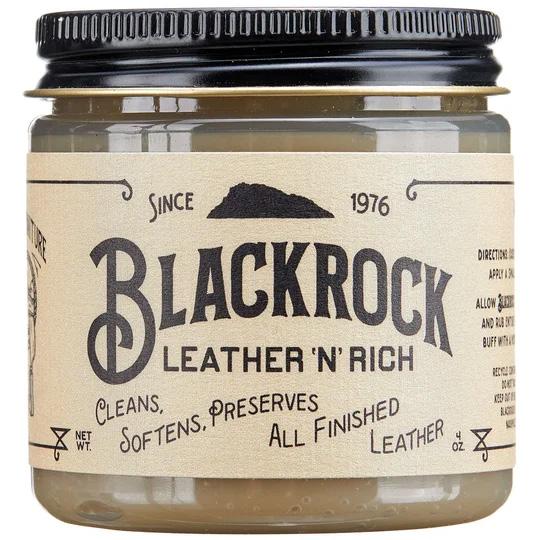
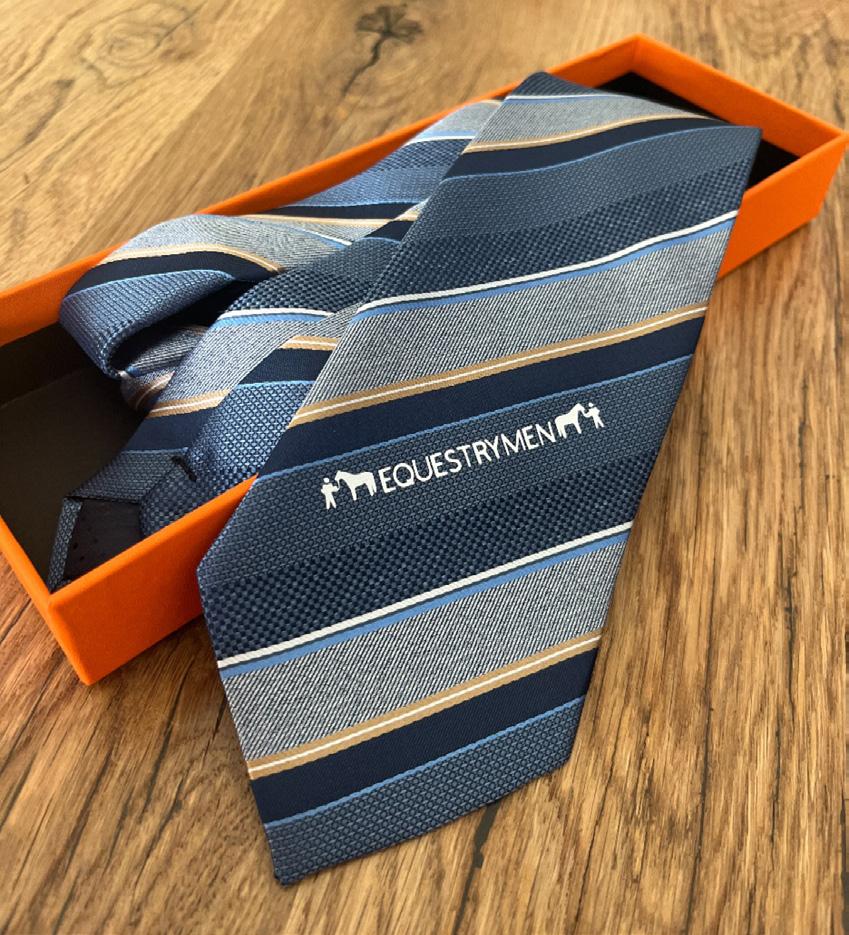

Introducing the new Equestrymen Tie, a perfect addition for the supportive equestryman in every horse woman's life. Crafted with attention to detail, this stylish accessory not only showcases a passion for equestrian culture but also adds a touch of sophistication to any outfit. Available in a variety of colors and designs, these ties make excellent stocking stuffers for the holidays, appealing to a diverse range of tastes.
Whether dressing up for an event or enjoying everyday wear, the Equestrymen Tie is sure to impress. Elevate the giftgiving experience this season with a thoughtful and stylish present that embodies the spirit of equestrianism.
www.equestrymen.com
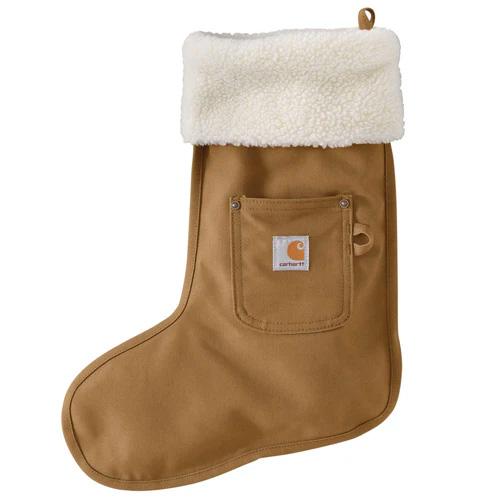
Make it a Carhartt Christmas with this duck canvas Christmas stocking. The Carhartt Christmas Stocking’s standout feature is its robust design, which embodies the durability synonymous with the Carhartt brand. This stocking not only brings holiday cheer but is also built to withstand wear, making it a lasting addition to holiday celebrations.
Available at: Carthage Farm Supply in Carthage.
A yummy combination of Peanut Butter in Milk Chocolate. You will find this pony packaged in its own "box stall" depicting his Corgi and Jack Russell buddies! The perfect pony, no doubt!
• Pony is packed in its own "box stall".
• With a tummy filled with creamy peanut butter,
• Perfect for children and adults of all ages
• Gluten Free order your pony here: www.harborsweets.com



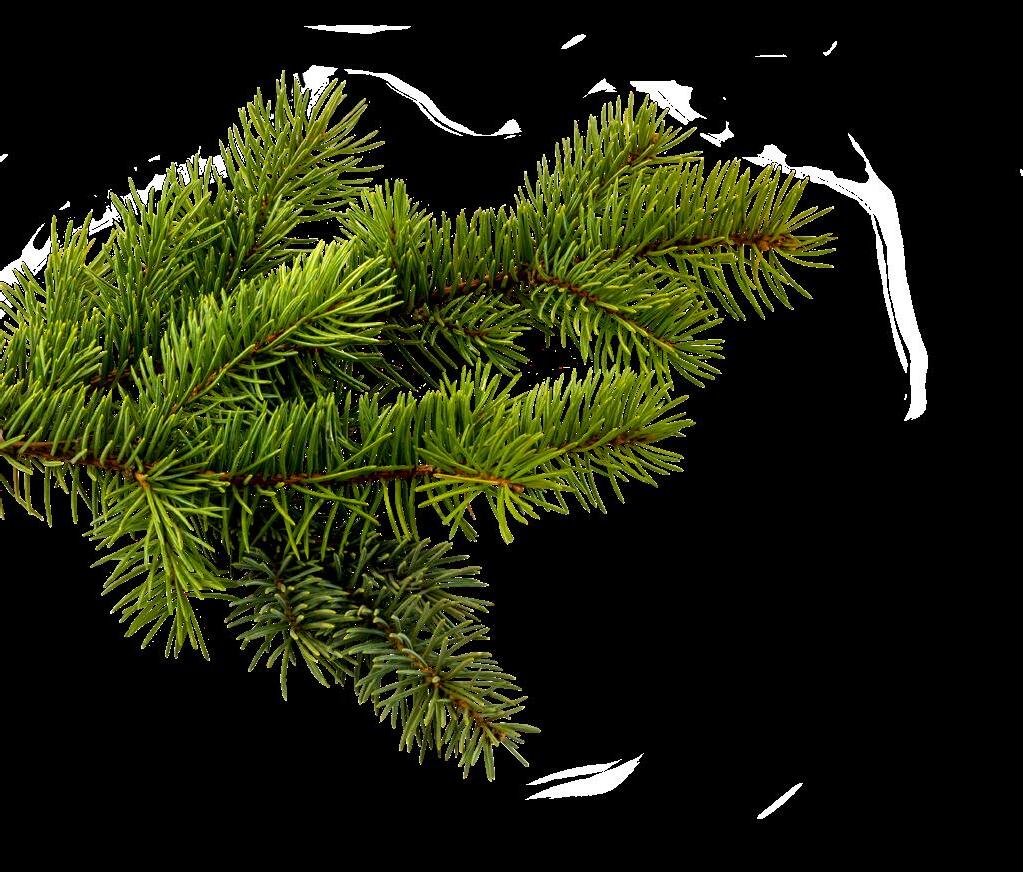
Keep your bit clean and your t-shirt slobber free! The stable feed bit kit includes a mitt's and cleaning spray to help clean your bit after each ride. Spritz some of the Peppermint cleaning Spray onto your bit for a minty surprise for your horse.
Find it here: www.stablefeed.com
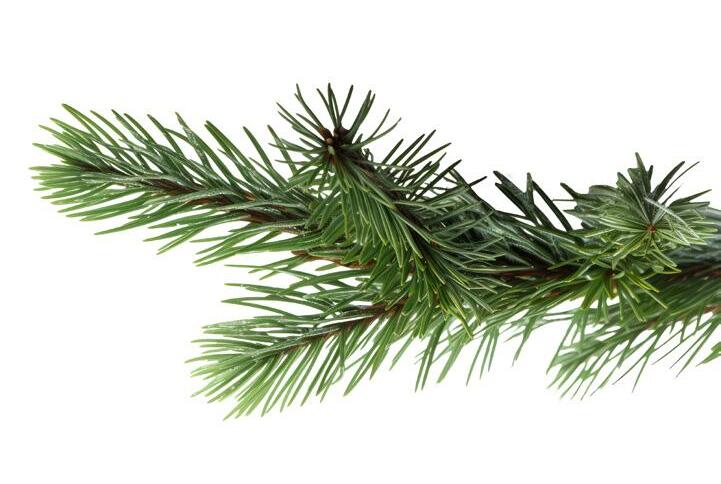




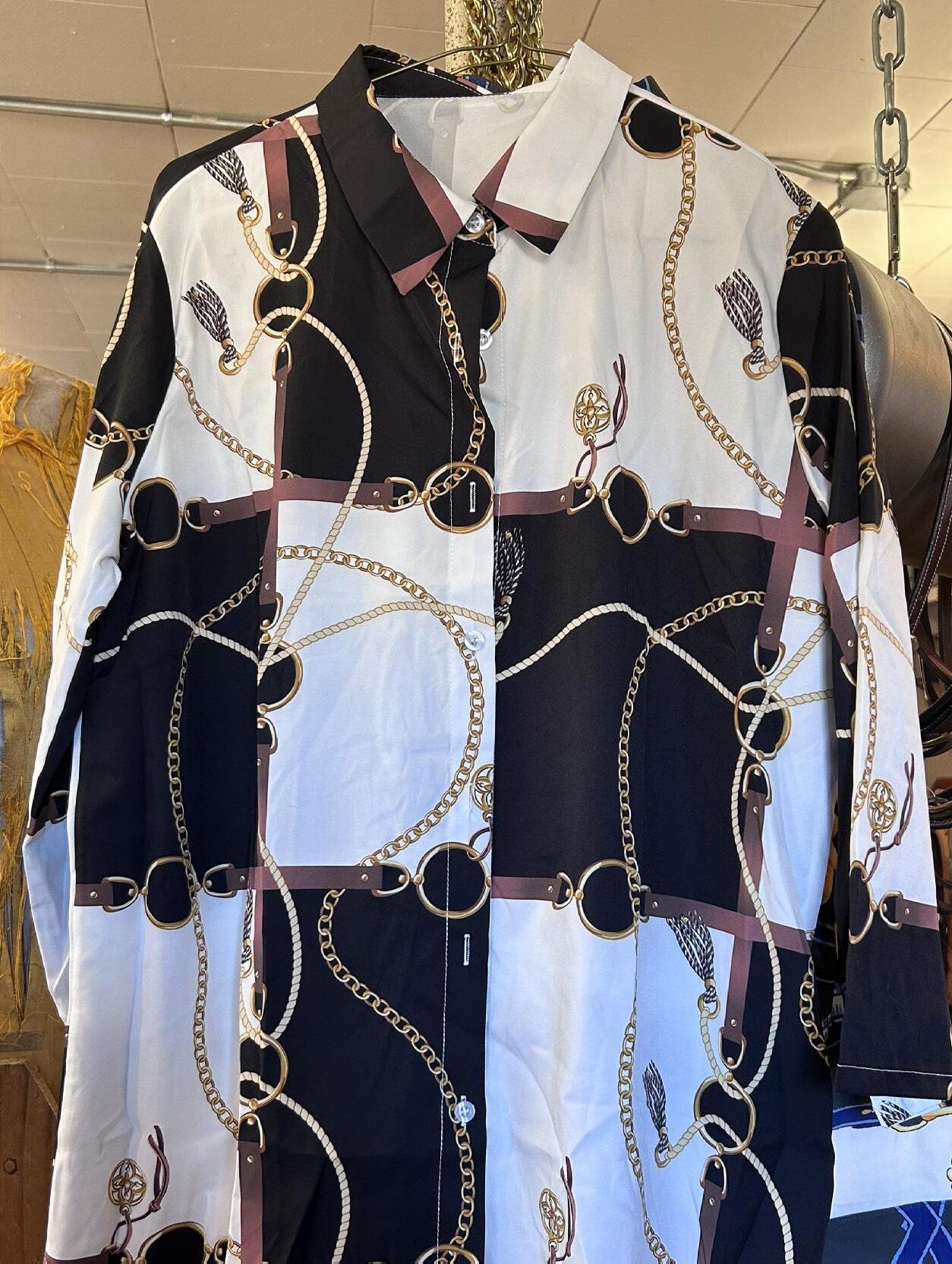
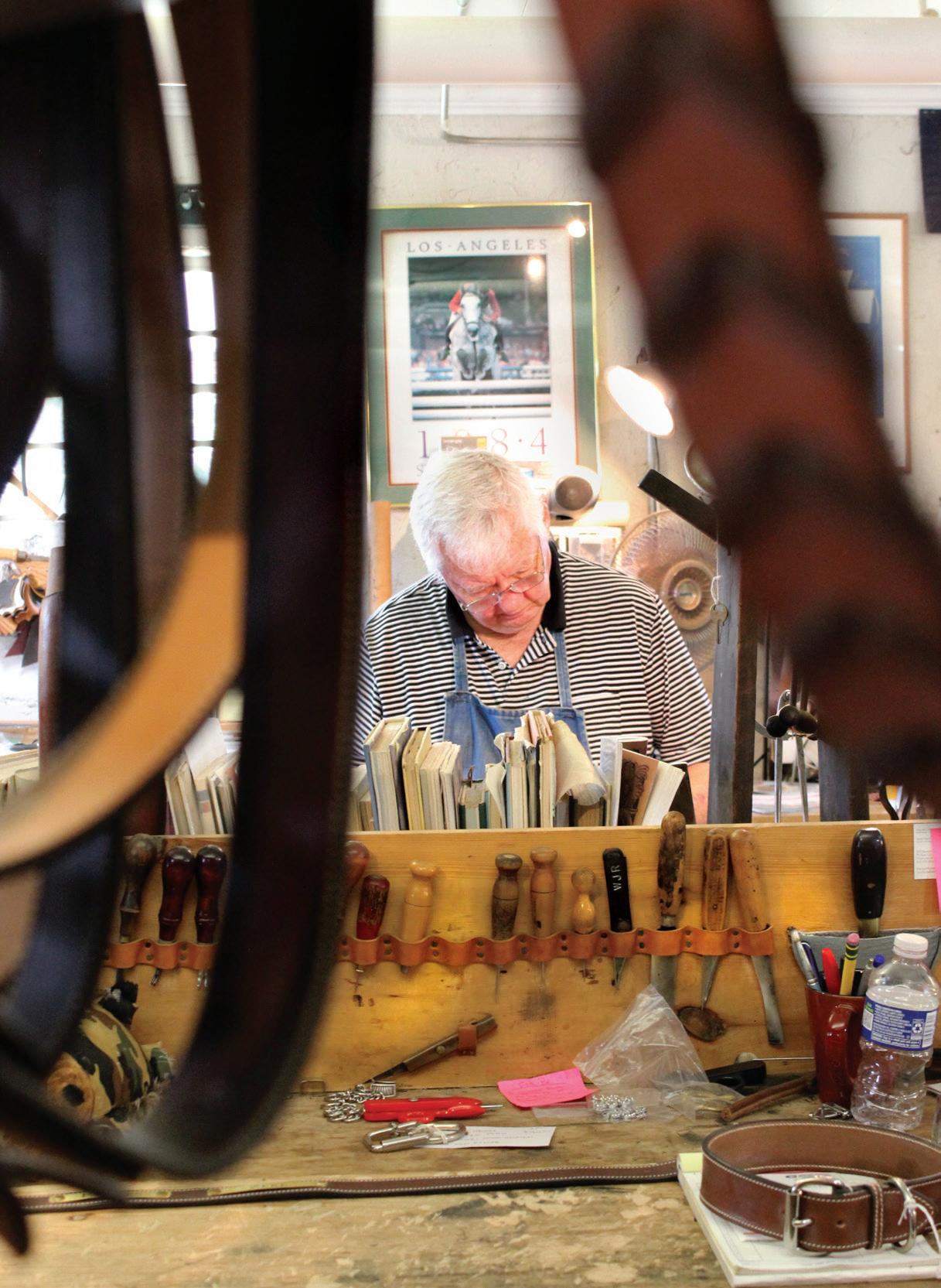
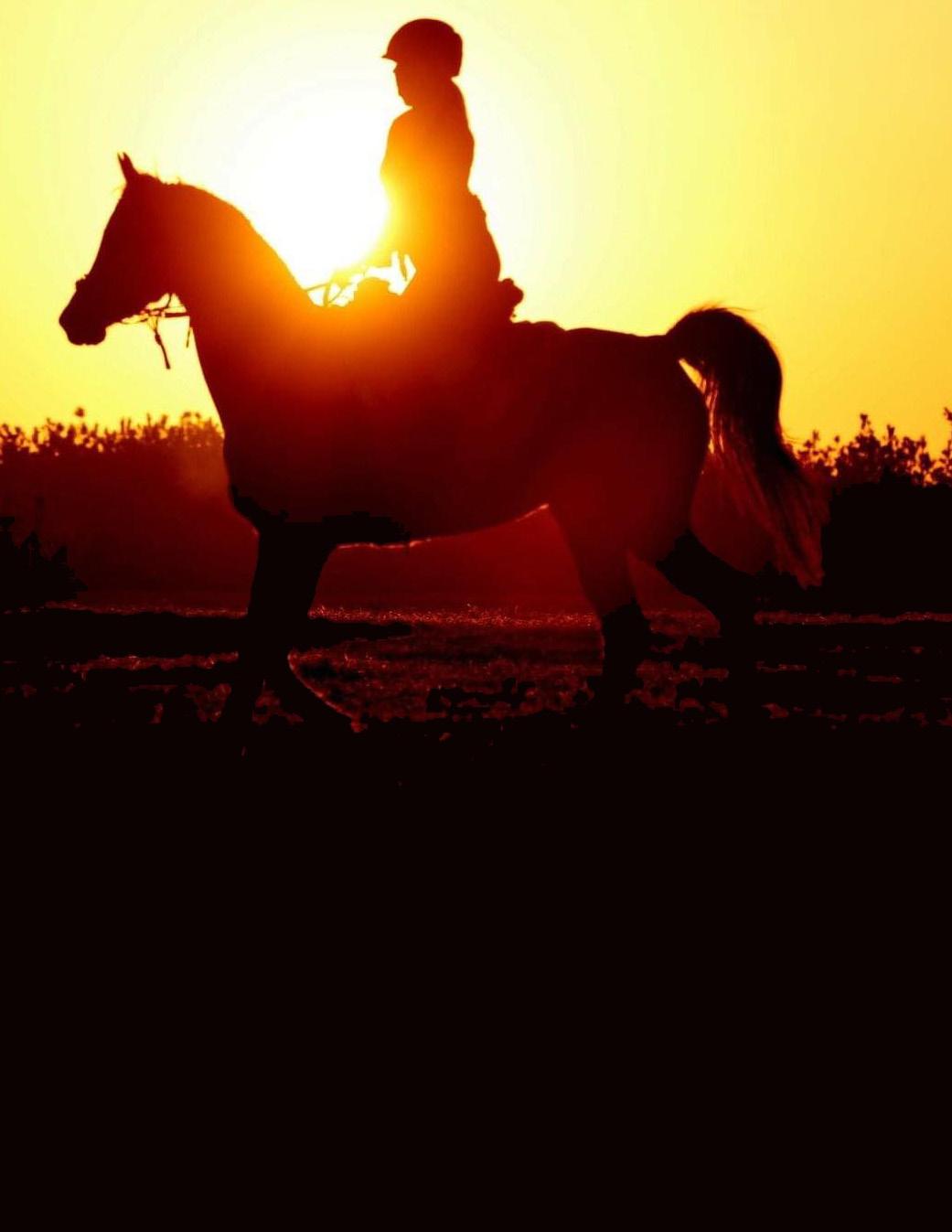
Mary Kate Murphy Photos: Becky Pearman
t's the most easily-recognized images of any equestrian sport - a lone horse and rider clambering up a steep rocky incline. Each precarious foothold takes them higher above the visible ridgeline of the Sierra NevaIt’s one oda mountains. Out of view is the relatively smooth bypass trail where riders can opt to skirt around Cougar Rock to continue on with the annual Western States Trail Ride, better known as the Tevis Cup.
That scene comes about 24 miles into the oldest and most strenuous endurance ride in the United States. It is a literal apex in a sport of nights spent in campsites in all types of weather, early mornings, weekends subsisting on canned ravioli and energy bars, and miles after inglorious miles of conditioning rides. Endurance riding is as much a lifestyle as a hobby, adopted fully by all who participate: including, a few
thousand miles east of the Tevis trail, competitors who train on the sandy lanes of the Walthour-Moss Foundation.
For people accustomed to spending upwards of 12 hours a day in the saddle, the back of a horse is like a second home. But it wasn’t always that way for Heather Wilkerson. She started trail riding as an adult during one of her husband’s military deployments. Preferring one-on-one time with her horse to socializing with other riders, Wilkerson signed up for a limited distance ride.
“I had a paint horse at that time and rode him 10 laps around my friend’s pasture, which was 10 miles. I figured, okay if we can go and do 15 off of adrenaline we’re good. We ended up doing 25 miles that first weekend,” recalled Wilkerson, who eventually adopted an Egyptian Arabian named Ghost and dove headfirst
into a sport of long hours shared by horse and rider. “He’s the reason I wear an air vest, but I learned to really ride. We started at 25 miles, then I snuck off to Florida to do my first 50 miles. I had no idea if he could do it, if I could do it, and now he’s a hundred-mile horse.”
Endurance riding might be more daunting for equestrians with experience in other disciplines than it was for Jennifer SapiraGower. She and her husband Tom Gower both came to endurance riding as adults, separately, and met each other in 2020 through a group planning for a 300-mile race in Mongolia. But 20 years before that, Sapira-Gower was a novice adult rider leafing through books for training tips to use with her off-the-track Thoroughbred.
“I was a pretty green rider and thought I was better than I was,” she said. “But in this book there was a paragraph about
endurance riding and I thought ‘I’ve found my people.’ So I found the website for the American Endurance Ride Conference. There was a competition maybe 30 miles from my house, so I called the ride manager and asked if I could volunteer.”
Spending that day scribing for a veterinarian was among the most educational days in SapiraGower’s career as a horsewoman to that point, and a closer experience of endurance than many equestrians ever get. The Gowers now live in the mountains of southwestern Virginia with 10 horses, half of whom are retired endurance mounts. They recently relocated from Raleigh following
in Wisconsin when a colleague recommended endurance riding. Gower soon realized that horses and humans aren’t the same kind of athlete.
“When I ran cross country and track, we would do 110 miles per week before we start tapering for meets. These horses are racing 160 kilometers. I had to get educated that it doesn’t scale up,” said Gower. “As a runner, second place was not good enough, and that’s not the way it works in endurance. You’ve got to bring them along slowly, then pick your races. If you take care of them they can be really competitive into their late teens and twenties.”
Arab-Standardbred crosses and one is a Morab. Wilkerson’s barn includes several Arabians and a Mustang named Nevada who finished the Tevis Cup last year with Sarah Arthur aboard. Wilkerson’s part-Saddlebred Artistri, known as Nick, was the top half-Arabian in AERC competitions for 2022.
“I'm kind of a forward rider. Typically I’m either trotting or cantering, so I want a horse that will move out on his own,” Wilkerson says. “You’re looking at conformation and bloodlines and all that, but you can’t buy the heart. My gray wants to see what’s around the corner, he wants to see what’s up the next hill. Even at 75 miles, God forbid
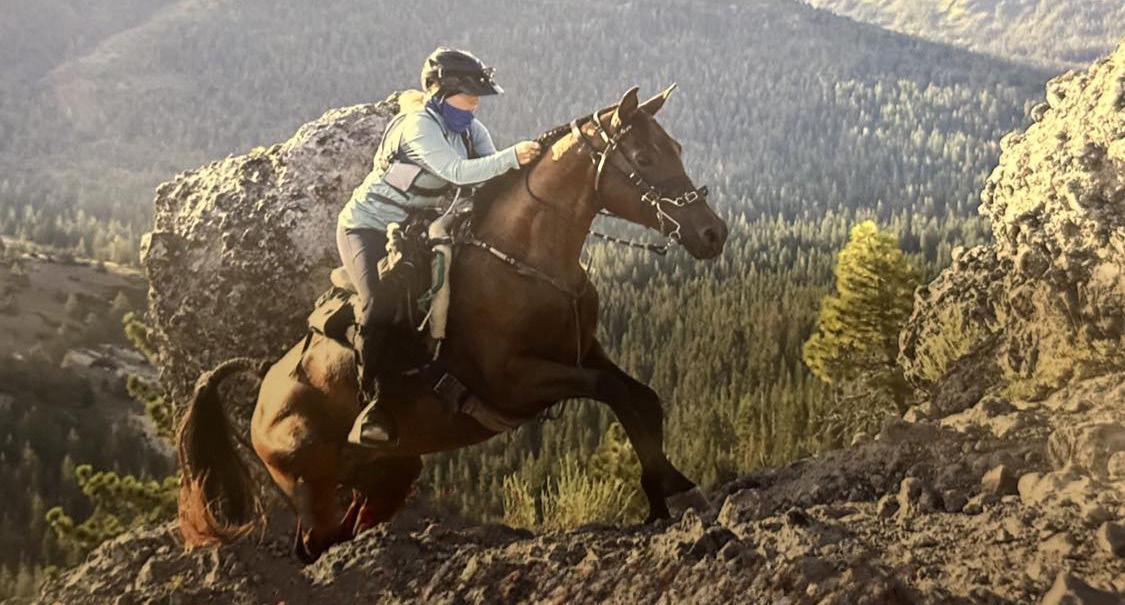
Tom’s retirement as a professor of forestry and natural resources at N.C. State University.
Gower grew up on a farm in Kentucky where his mother ran a boarding and lesson program, but didn’t return to riding until he’d maxed out the mileage on his own legs. He was just north of 50 years old and teaching
Horses of any age or breed can be successful in endurance; in fact the annals of Tevis finishers include an 11.2-hand Hackney and a 27-year-old Arabian. Arabians are nearly ubiquitous in endurance riding thanks to their moderate size, lightness on their feet and never-say-die attitude. Of the Gowers’ herd, seven are Arabians, two are
there’s a horse in front of you because he just wants to get to them.”
As in any equestrian discipline, a horse with the brain and physical ability to do the job is just the start. It takes years to create a veteran competitor. And veterinarians check that homework at every competition — at least half a
dozen times over the course of a hundred-mile ride. Horses’ heart rate must come down to 64 beats per minute within 30 minutes of arriving at each checkpoint, where soundness, soreness and hydration are also evaluated.
Conditioning isn’t all hard riding every day though. A confirmed hundred-mile horse might do around 30 miles per week. The Gowers are currently in the process of bringing their younger horses up to the hundredmile level. The Vermont 100 Endurance Race is Sapira-Gower’s favorite ride, held concurrently with an ultramarathon for human runners.
“I asked an accomplished rider at a convention how he knew a horse was ready. He said ‘when you finish three 50s in a row and they look like they didn’t do anything when you turn them out in the field, they’re ready to go to 100’. So I took his advice to heart and it has really worked out well,” said Sapira-Gower. “If they’re already fit they don’t need a lot of wear and tear to break them down, you just need to keep them fit enough to go.”
their horses’ overall strength and maneuverability.
“In dressage you’re riding every step. You can’t do that in endurance. but it carries over into endurance. They carry themselves better, they’re more powerful,” said Gower. “Some of our trails are single-track, weaving through forest - when a horse will
sure her horse has fresh hay and an early breakfast of oats. She’ll spend much of that time offering carrots and cookies so her horse starts the ride with a full stomach.
“We’re kind of the ‘nuts and berries’ of the horse world: the more natural, the better. Typically endurance riders keep their horses out on pasture, want them moving, want them exploring for many different reasons,” she said. “I wish all horse people would learn our feeding regimens, the importance of keeping your horse’s gut moving and what that means. We obsess over getting our horses to eat.”

leg-yield it’s like taking a Porsche into a turn.”
What goes on on the trail — sheer distance, terrain and natural elements aside — can be unpredictable. Endurance riders might have to deal with disruptions as varied as wildlife, farm activities, or even the occasional perplexed law enforcement officer. So arena work is also a vital part of training. The Gowers have at times taken dressage lessons as often as twice a week to improve
The Moss Foundation and other trails convenient to Wilkerson’s home in Parkton all fit the relatively flat, sandy profile. So she uses mountainous rides as conditioning opportunities, rotating her horses through competitions to keep them in shape. It may still be dark by the time she makes it to the start line, but Wilkerson will have been up for three hours to make
It’s a discipline where just about everyone is focused solely on supporting their horses’ ability to perform at their best, and everything else is just a bonus. The AERC maintains a list of mentors for riders new to endurance, and the community is like an extended family to both veteran competitors and newcomers alike.
“You will not find a more welcoming, experienced, excited group of people to have you there, to help you through it,” Wilkerson says. “These people don’t get their feathers ruffled by a lot of things, and are just so gracious and excited to have a new rider.”


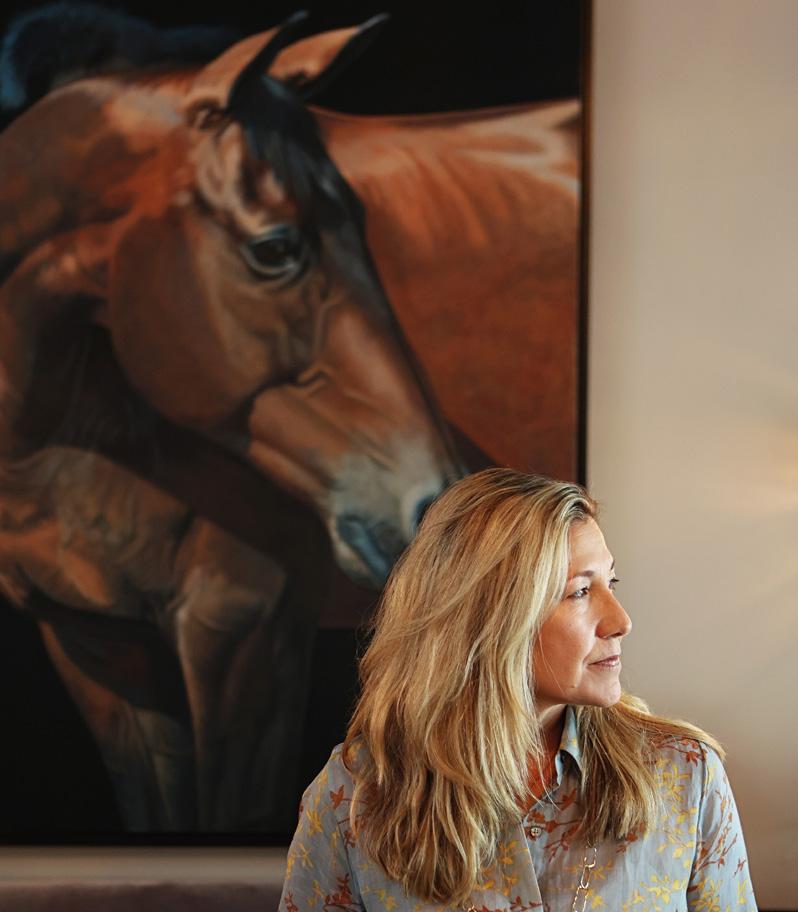
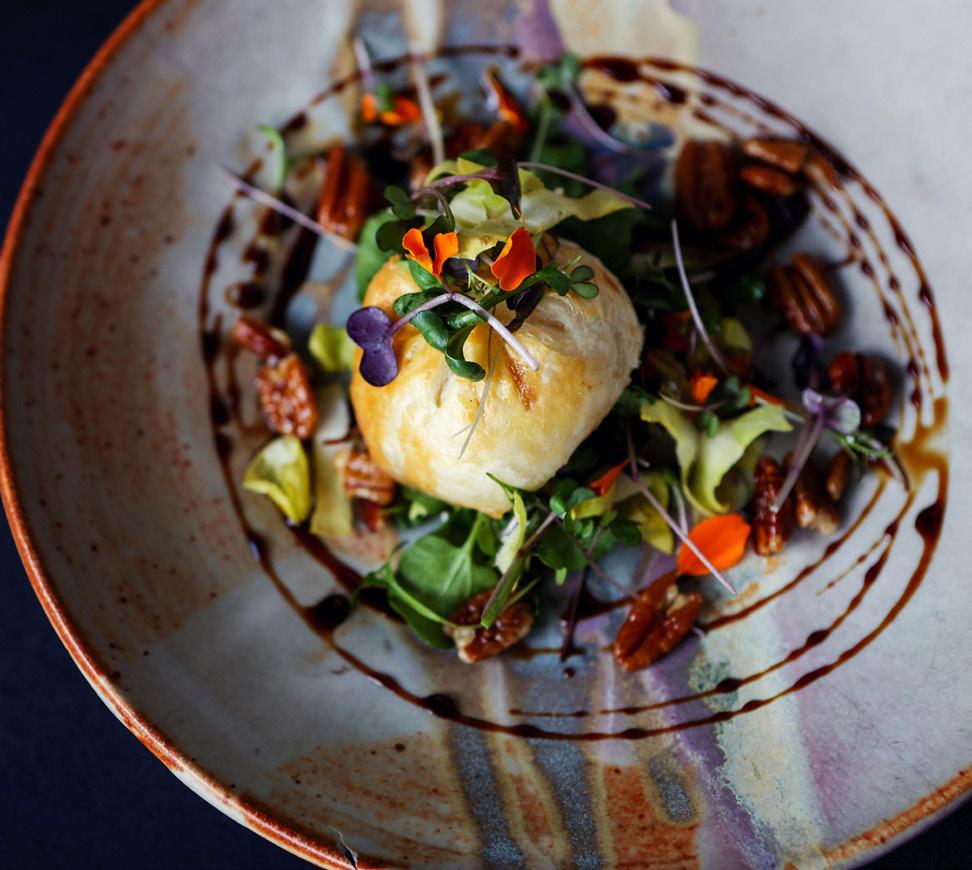
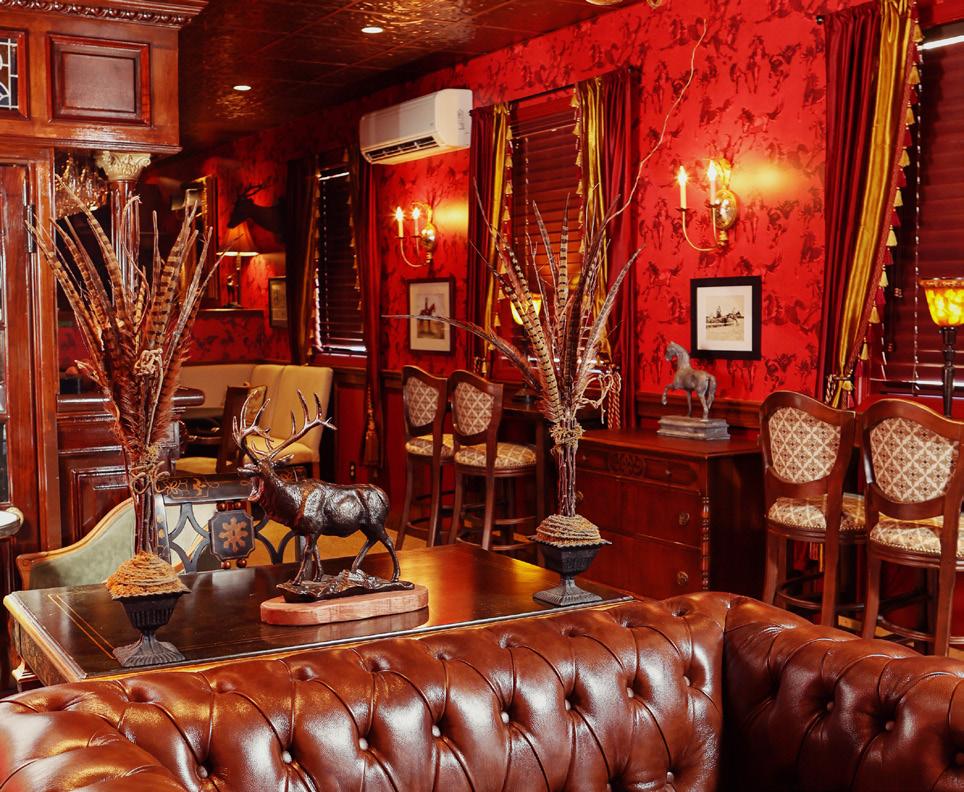

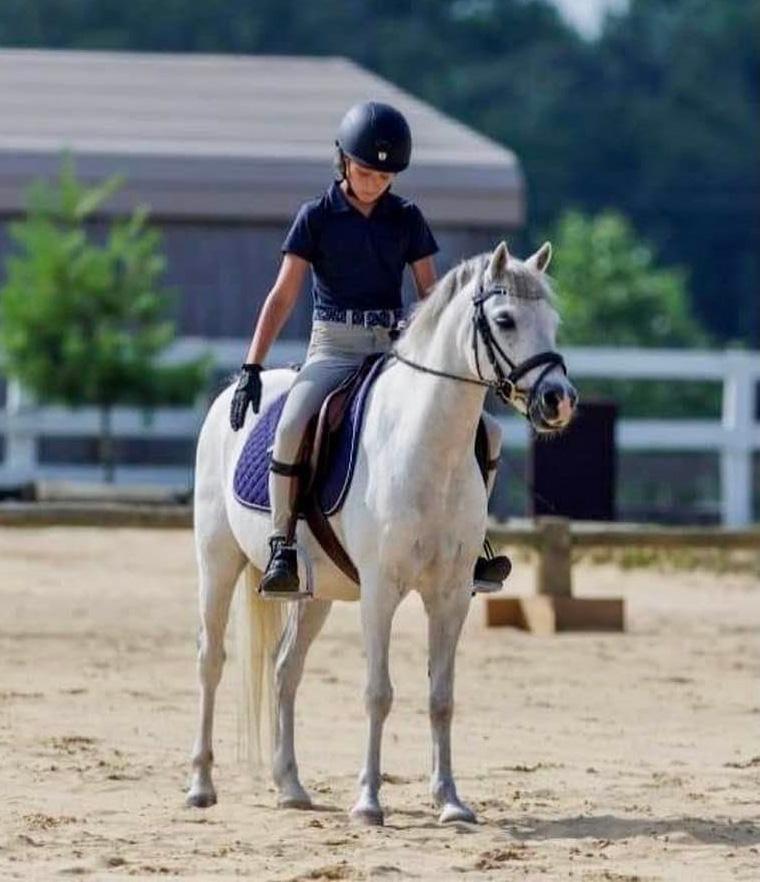

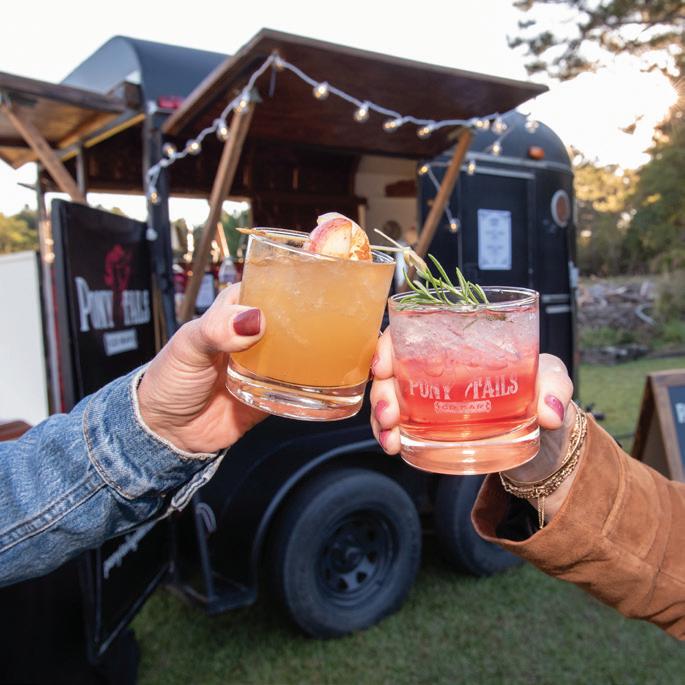
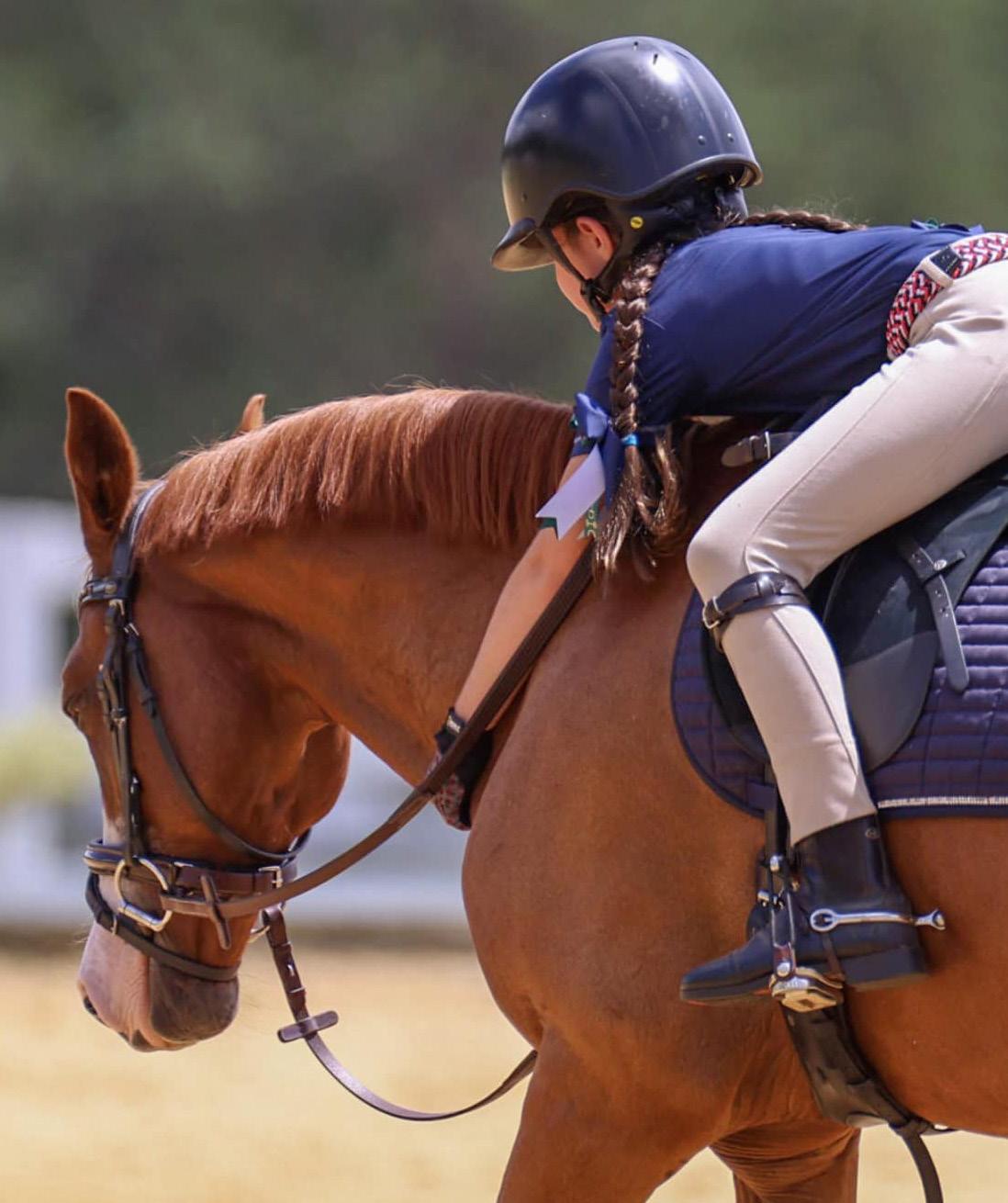
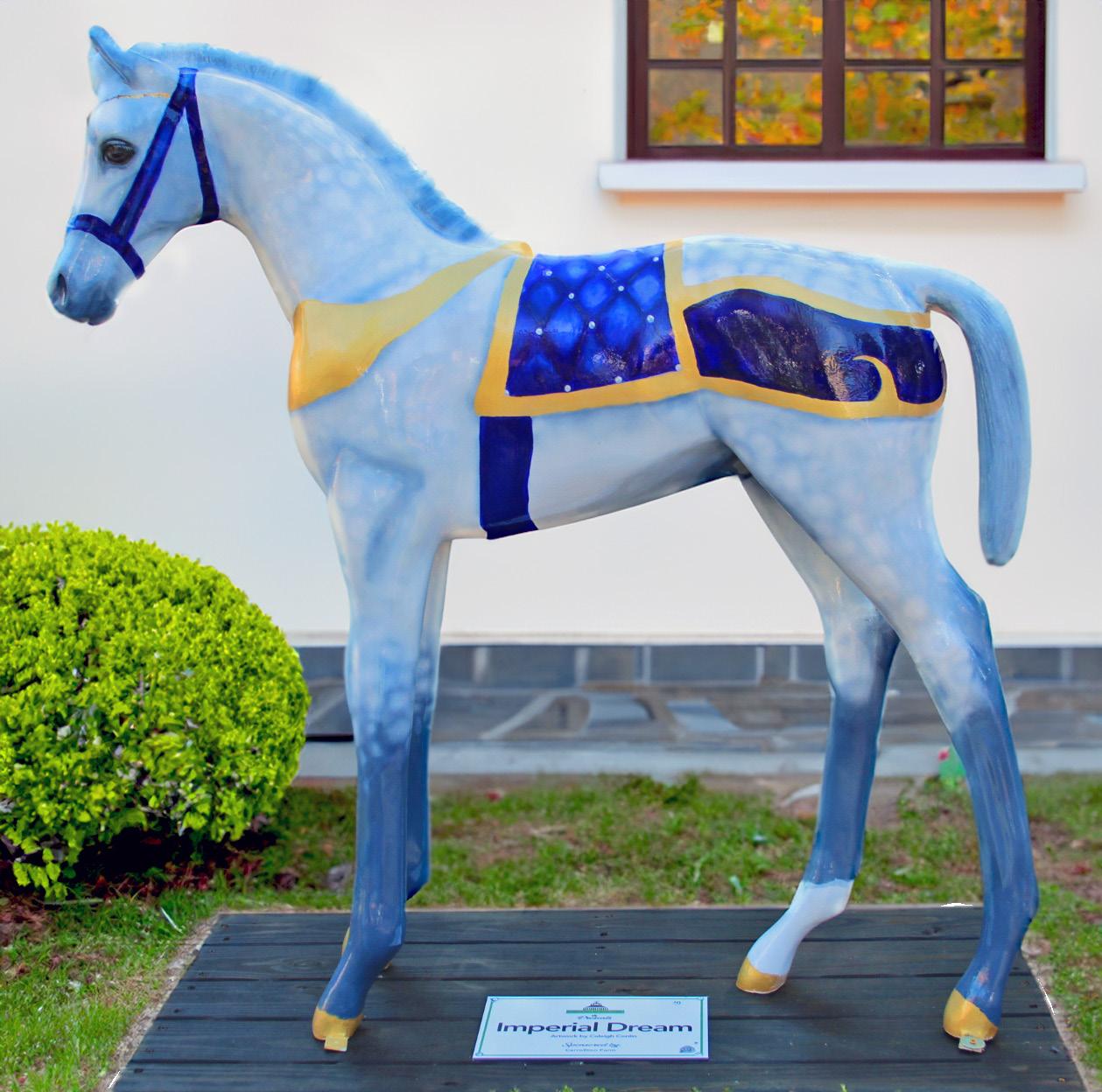

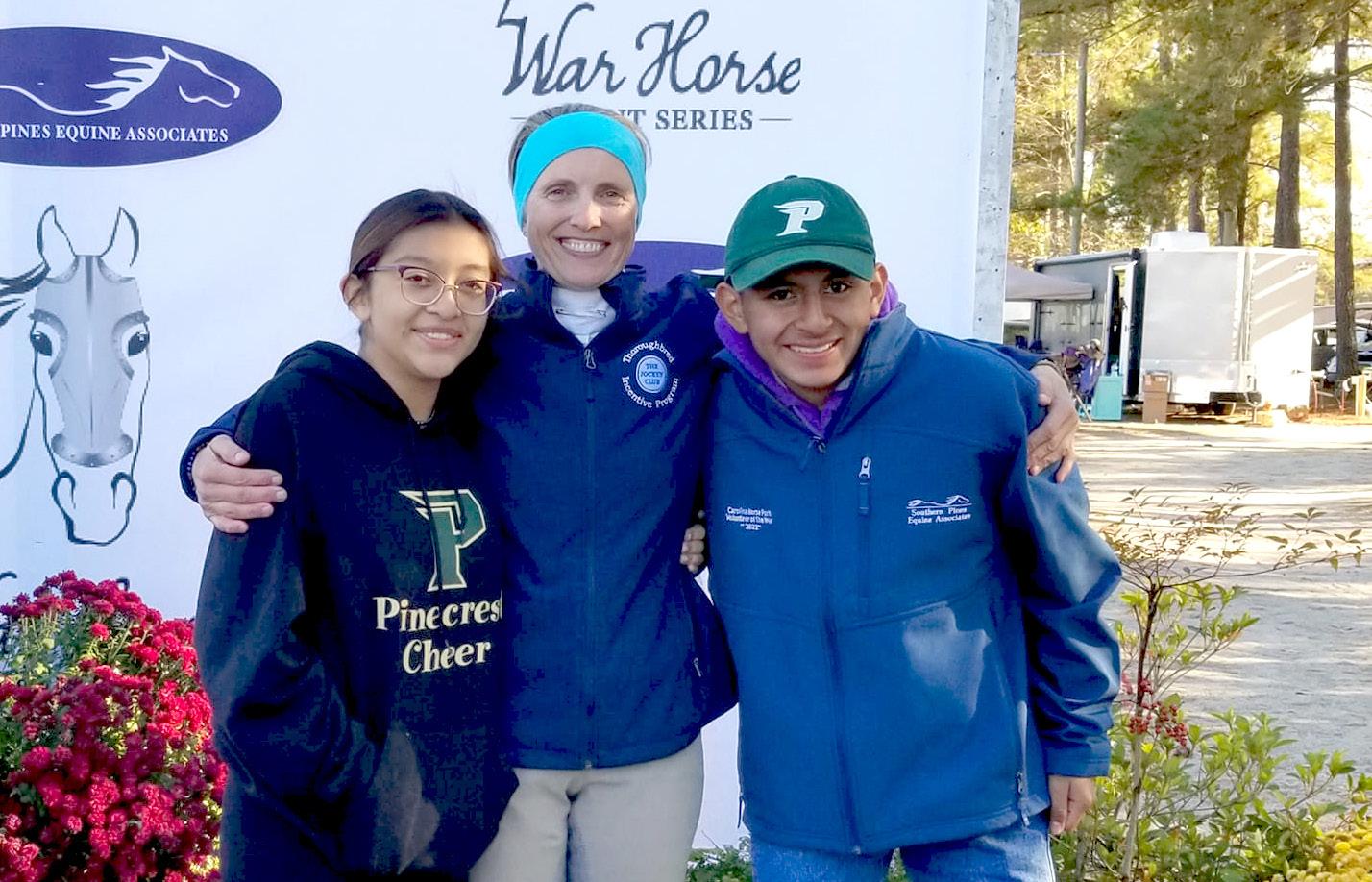
Cassidy Oeltjen
Competitors attending events at the Carolina Horse Park this Fall may have noticed the absence of a familiar face as they checked in to warm-up for dressage.
After more than a decade of expert management of multiple rings and people’s show nerves, Angelo Lobsinger made his way away from the Sandhills to start his collegiate career at Saint Francis College in Pennsylvania.
Yes, you read that correctlyAngelo effectively and efficiently fine-tuned the ability to control even the most chaotic of warmups before he’d reached the age of eighteen.
Although not an avid equestrian himself, Angelo has been exposed to the rigors of horse show life through his mom, Michelle Lobsinger - a long-time event
rider, and a familiar face around the Carolina Horse Park. It was an event that she was attending where Angelo began his tenure as a volunteer.
“It was in 2012 when my mom took me to an event where our good friend Lisa Cox was one of the judges,” he reflected. “I was hanging out with Margaret [Crevar] and my mom asked her if she needed any help picking up the Dressage tests. Given that I just started running for Saint John Paul the Second [Catholic School in Southern Pines], my mom thought it would be a good idea for me to ‘run’ the scores to the office since I was too young to drive a golf cart.”
Not only did Angelo continue to volunteer at the horse park, but his ‘running’ career has also not slowed down. Angelo spent all four years of high school as a
‘three season’ athlete, competing in cross country running, indoor track, and outdoor track. His desire to volunteer extended to all these sports, where he’d often show up early and stay late to assist the team. He was also recognized with scholarships from other sports organizations where he accumulated the most volunteer hours.
His accolades have continued in college where he has just completed his first Division 1 Collegiate Cross Country season, finishing with several PR’s while also upholding the grades required for his P.A. program.
Many of the skills he’s relying on for his success in college developed while standing next to that big sandbox at CHP.
“I think working at the shows has helped me prepare for college by taking on a leadership role
and to get the task at hand done, whether that be teaching a new volunteer how to be a Dressage steward or to take charge and handle a handful of rings at once,” Angleo expressed. “I also learned how to work with others as a team so we could all come together to make sure the show runs smoothly.”
Angelo isn’t the only one who can recognize the growth that he’s experienced through his volunteer hours.
“Working at the Carolina Horse Park has prepared him for college in the best way possible,” reflected his proud mother, Michele. “He learned the valuable lesson of getting along with people....all people, and sometimes very emotional people; young, old, men women, kids, dads, moms, grandmas, trainers, owners, riders, CHP personnel, competitors, spectators, etc… My dad used to say you had to learn how to do only 2 things in life, get along with people, and earn a living. Angelo has mastered the first part so much more than I ever imagined . Now, off to college to learn how to earn a living. His pop-pop would be so proud. I know we sure are.”
social life and activities beyond the walls of the equestrian world.
“I think the hardest thing about working at the shows was keeping the motivation to come back and keep giving up my weekends to volunteer,” he said. “This especially became hard when I hit my teenage years and only had so much time to myself versus when I was younger.”
little family at the Carolina Horse Park and it warms my heart to see how much people care about me.”
Watching him run multiple dressage rings smoother than a three ring circus, one would never guess that he ever felt a twinge of stress or reluctance to be there, but he did have some advice to those who enter ‘his’ warm-up area.
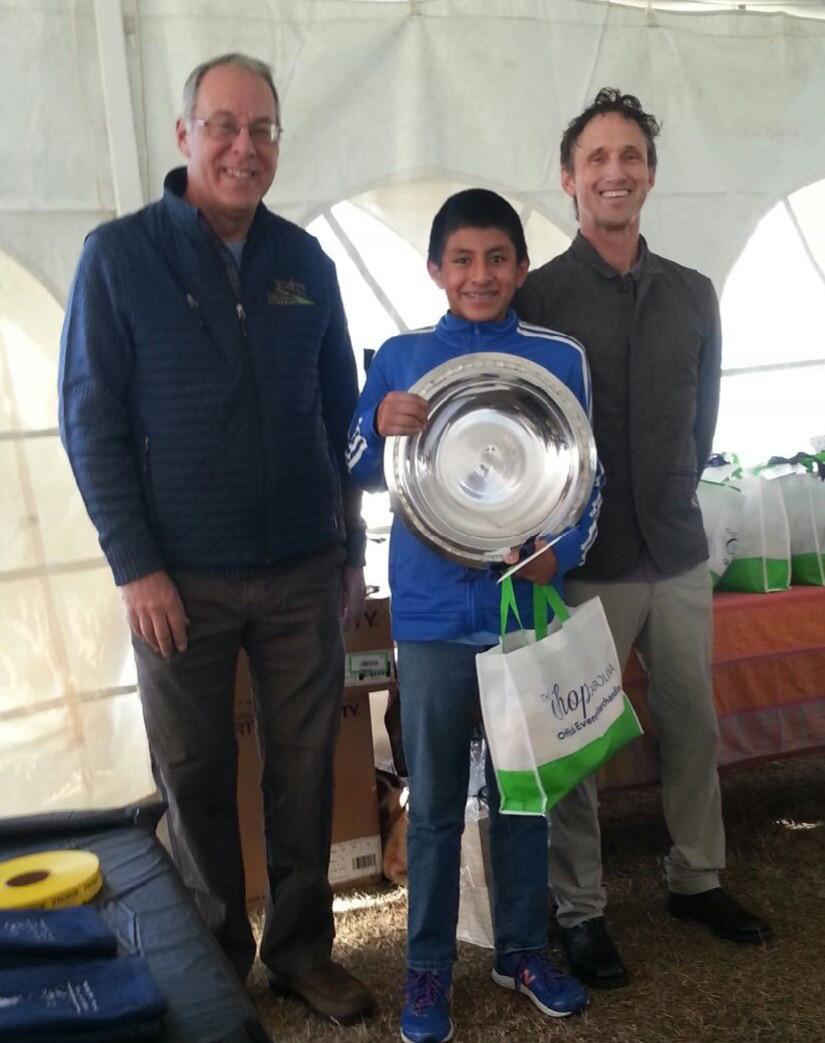
“The two things I wish that competitors would know is what arena they are in and what time they ride and I know it is hard especially if someone is riding multiple horses but it makes the Dressage stewards job a little bit easier,” he expressed. “The other thing that competitors should know is that the ride time they are given is the time they should be in the ring, going down the centerline to the judge to start their test - this would keep the show running very smoothly and rings would not run behind as often.”
Oftentimes it can seem like volunteering is a thankless job. Long days, adverse weather conditions, and stressed competitors can deter some people from offering their time. Those same long hours in the hot/ cold/mud/wind/etc… can also reroute young equestrians from spending long hours in the barn to spending them around friends of the two-legged variety. Even though he wasn’t a horse-person himself, Angelo wasn’t immune to the magnetic pull towards a
Angelo’s skill as a vital member of the horse show staff, and his ability to work with all kinds of competitors quickly made him a favorite both among show management and also horse show attendees. Those relationships he formed made those long days seem much more manageable.
“My favorite thing about working at the shows has to definitely be all the thank yous and appreciation I receive from the competitors, trainers, judges, spectators, etc…” he recalled. “I have been able to build many relationships throughout the years and from those relationships, I have built a
And while everyone knew there’d be a time that Angelo would ‘fly the coop’ - leaving the reins of the warm-up area to the other capable volunteers - it didn’t make the day any easier. Just like a family’s last dinner before leaving their son behind at college, the family at the horse park gathered at Angelo’s last event to wish him well in his new adventure. International level officials, multitime Olympians, advanced level riders, and so many others gathered in person and virtually to celebrate his contributions to the park, and to provide advice and congratulations on his future endeavors.
The Santana Center was established in November of 2004 by Kathy Castro, named after Santana Satin & Gold, her own palomino American Saddlebred gelding. Santana’s memory lives on through the development of The Santana Center, echoing the message of the true bond that can exist between horse and human if just given the opportunity. Many horses that we rescue come from bad owners or situations, yet are still capable of giving their hearts to that one special person. The Santana Center's mission is to bring to light the issue of unwanted horses, and help these horses find their forever homes.
Answers by Kathy Castro (Santana Center founder) and Nikki Dorenzo (Community Outreach Coordinator)
1. What are some of the most rewarding experiences you’ve seen being involved with rescuing and placing horses?
(Kathy) So many of the horses we rescue have come from less-than-ideal conditions. Physical rehabilitation is the most noticeable but is actually the easiest. It’s the emotional rehabilitation that is the most difficult, but the most rewarding. Many of these horses don’t trust and have shut down. They were pushed further than their ability to handle it. This is the part that takes time, patience and a lot of consistency. When that horse finally looks at you and really looks at you, you know you have made a difference. Sometimes it happens quickly and sometimes it takes years. It is absolutely the most amazing feeling in the world to gain that trust and respect from that horse.
It’s so critical that we find the right new home where they can continue to feel safe which leads to the second most rewarding part of rescue-being able to watch this horse and owner develop their bond and become a team and a family.
2. What are some of the things you wished all horse owners would know in regard to the rescue side of the industry?
(Nikki) I think that many people tend to separate horses in their minds as “rescue” horses or “regular horses”, but they are one and the same. The horses that come to our organization all have a past, whether they were once raced, shown, used in a lesson program, etc… Some of our horses are very young and have the potential to be used for any discipline of riding. Most people don’t realize that ANY horse can be just one bad sale away from ending up in a bad situation.
Almost daily we see people giving away or selling horses, breeding horses without the proper knowledge, and replacing outgrown show horses with newer, shinier ones. Once these horses leave their owner’s hands, any of them have the potential to end up in a rescue situation, or even worse, on the slaughter truck. That is why we place such a strong emphasis on education and encouraging potential horse owners to have a plan in place for their horse for the rest of its life.
Please remember that as your horse gets older and maintenance becomes more expensive, that you made the commitment to that horse to care for it for the duration of its life. The most heartbreaking thing for us as a rescue is to have to take in someone’s older horse and watch the confusion in its eyes as it struggles to process leaving a place it has lived its entire life. It takes a piece of our hearts every time we have to give these special horses, who have given so much, a well-deserved ending. I would also encourage horse owners to do their research and support local, legitimate horse rescues because most, if not all, rescues are underfunded and have to work extremely hard to bring in donations. If you can’t donate, offer to volunteer. If you can’t volunteer, offer to help with fundraising. Every little bit of support helps!
3. The Santana Center works hard to make horses ready for placement. What are the most important skills that lead to a successful future for these horses?
(Nikki) When we get new horses in, we always start with the most basic groundwork skills. A horse that is rideable, but kicks at the farrier is not going to be adopted out very easily. We start with the most basic skills of haltering, leading, standing for the vet/farrier, etc. Then as they master those basic skills, we can progress to round pen work and riding. We use a lot of positive reinforcement techniques, especially with our young or feral horses. We have learned that the more enjoyable the learning session for the horse, the more willing they are to do things with you later on down the road.
All of our horses are in different stages of training, and we have several trainers that work with us depending on where the horse is at in its training. We make sure before adopting out any horses that the potential adopter knows the horse’s current training level and that they have the experience/resources to safely continue with its training.
(Kathy) We also take in a lot of young untrained horses, some feral. You can watch them progress from fear to curiosity to wanting the connection. They love to play. I have never laughed so hard as when I have watched them running and bucking or playing with a ball.
